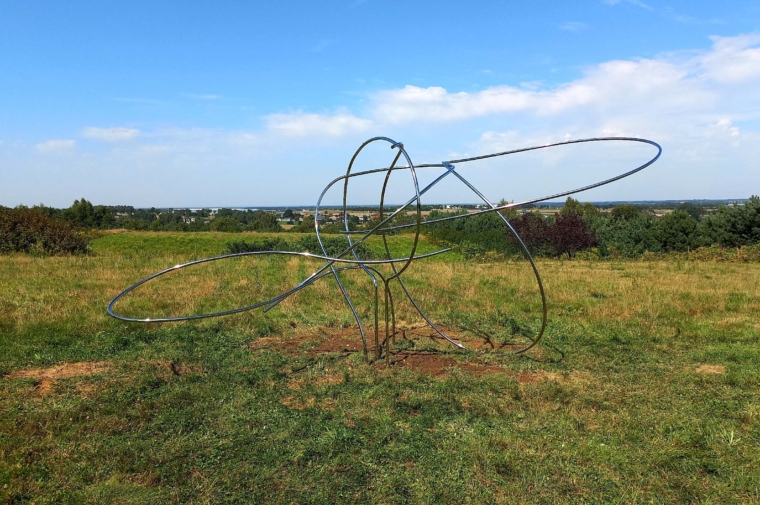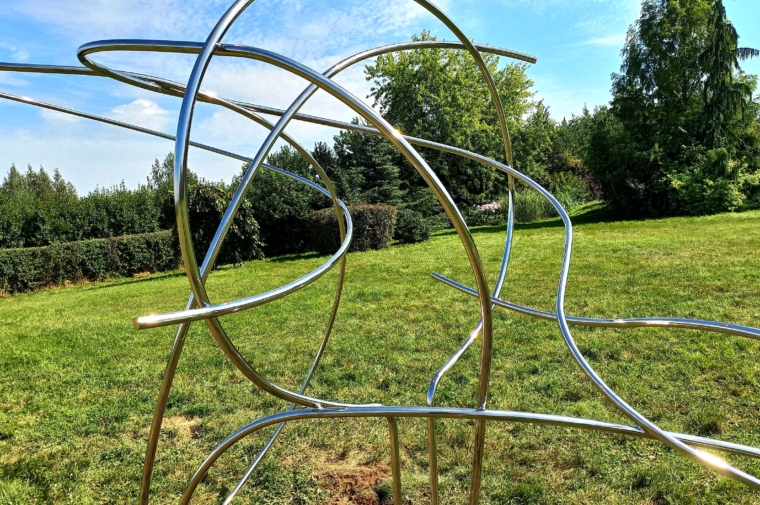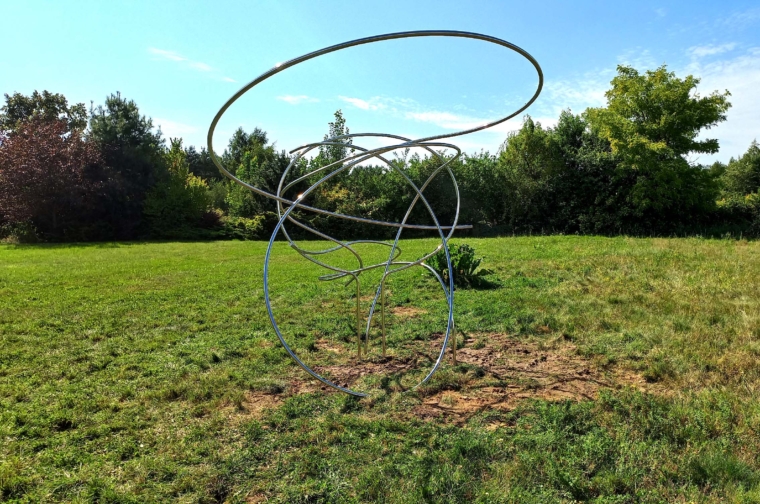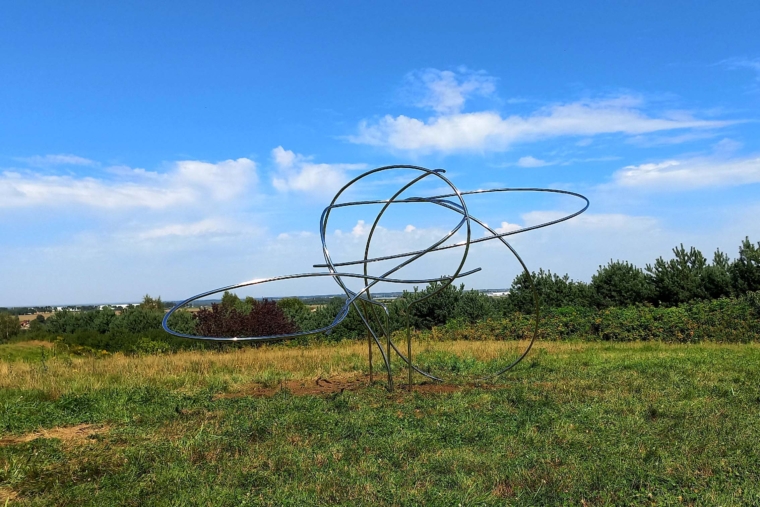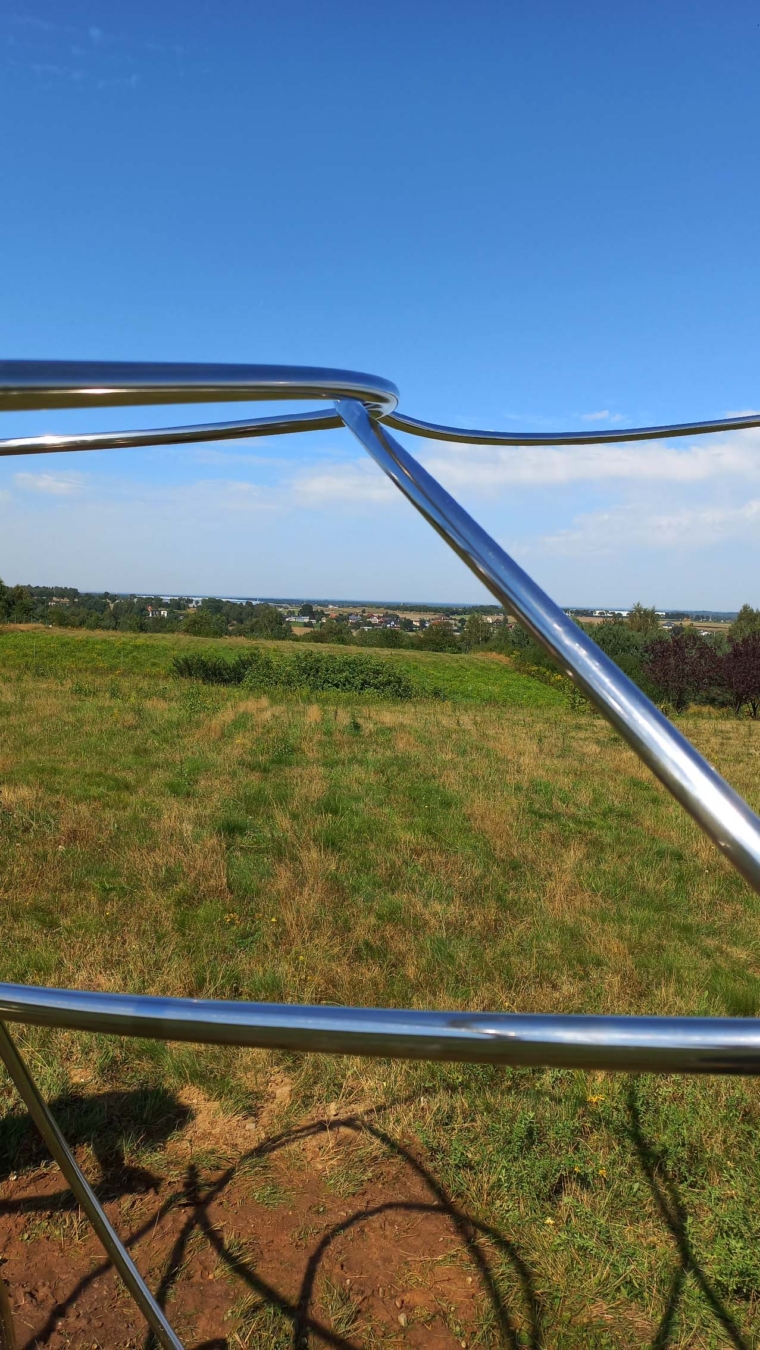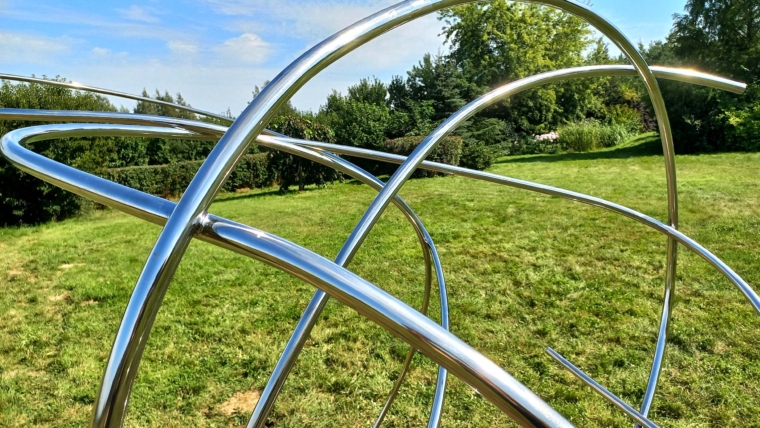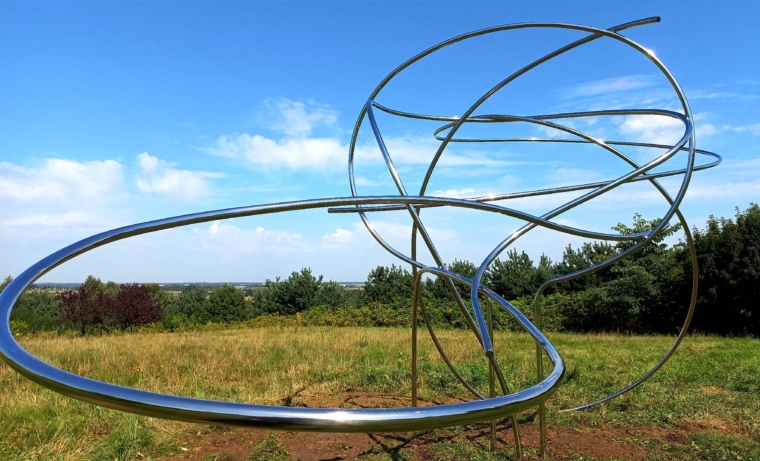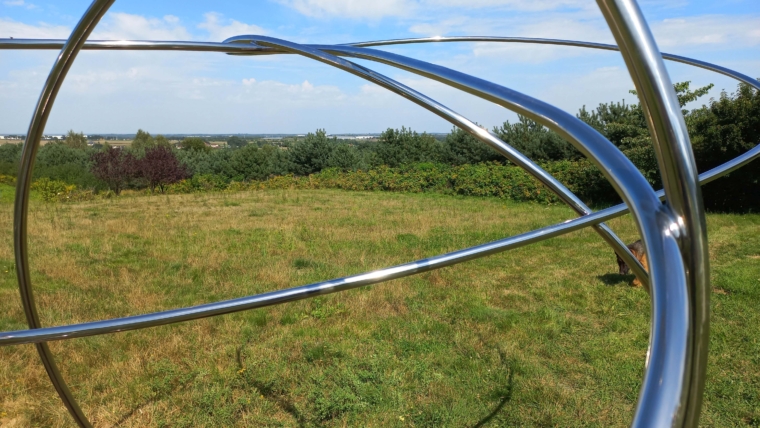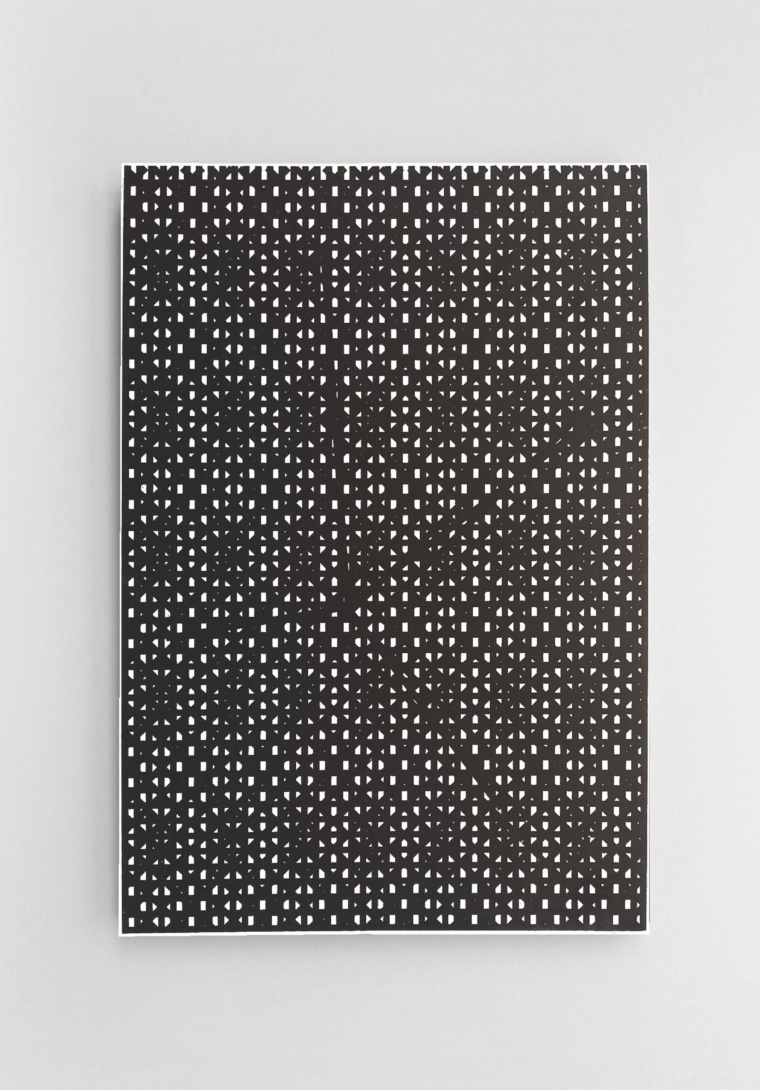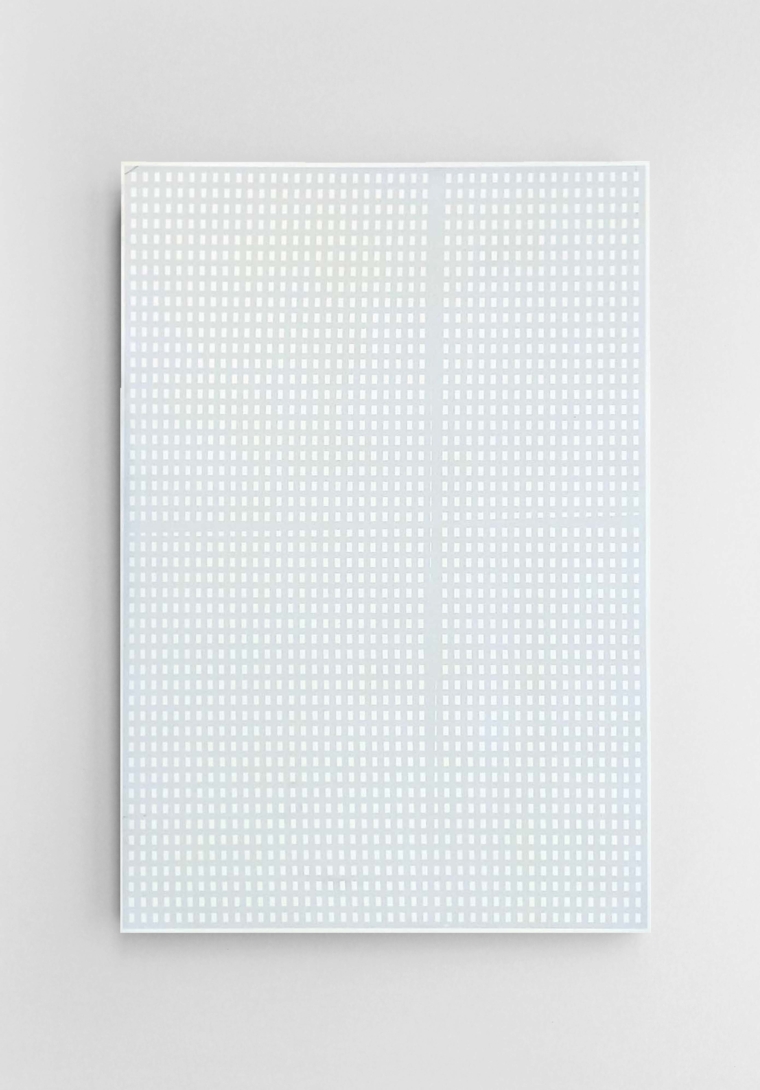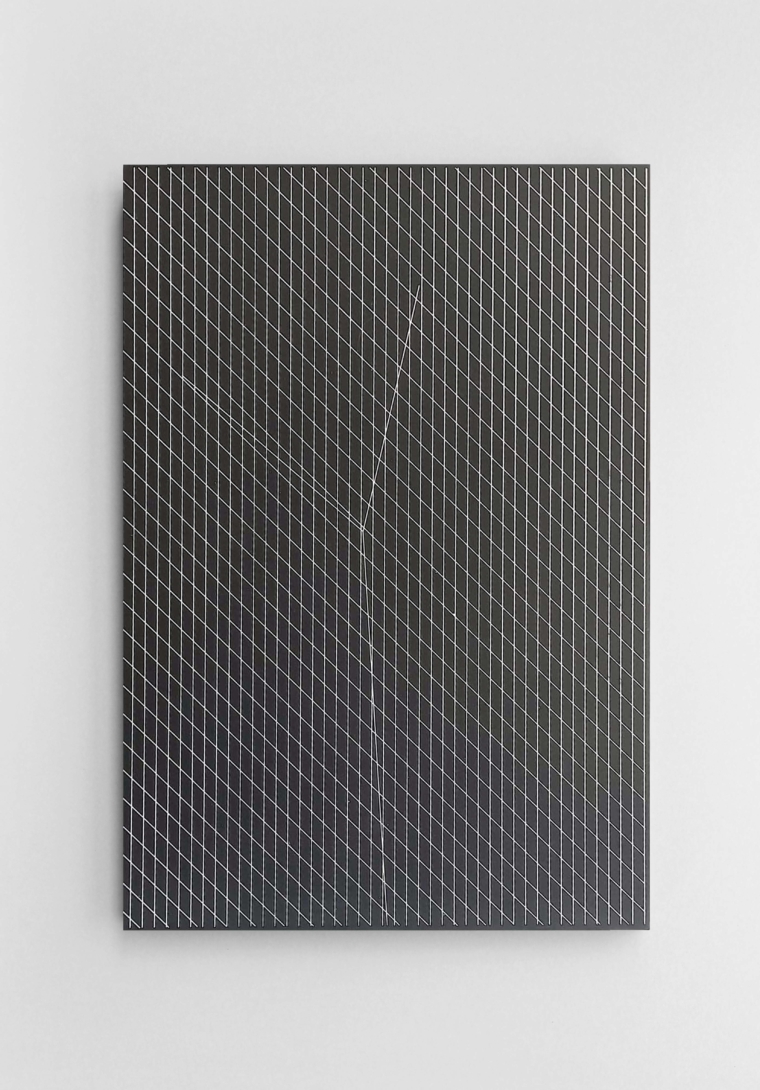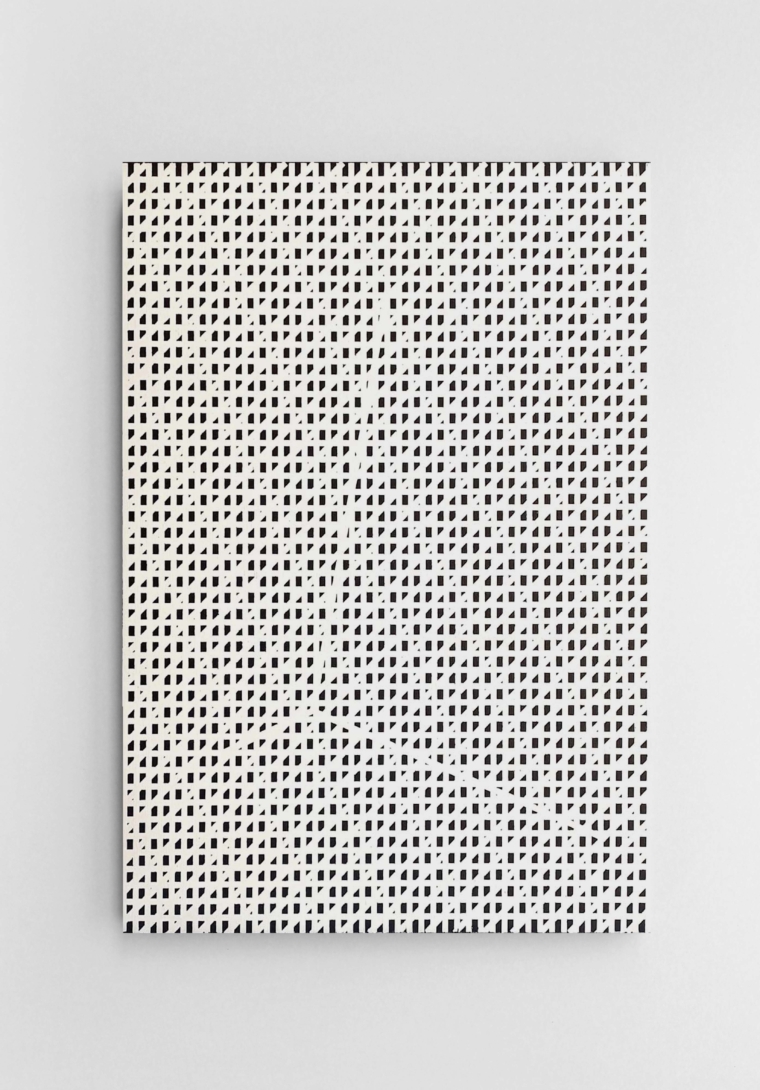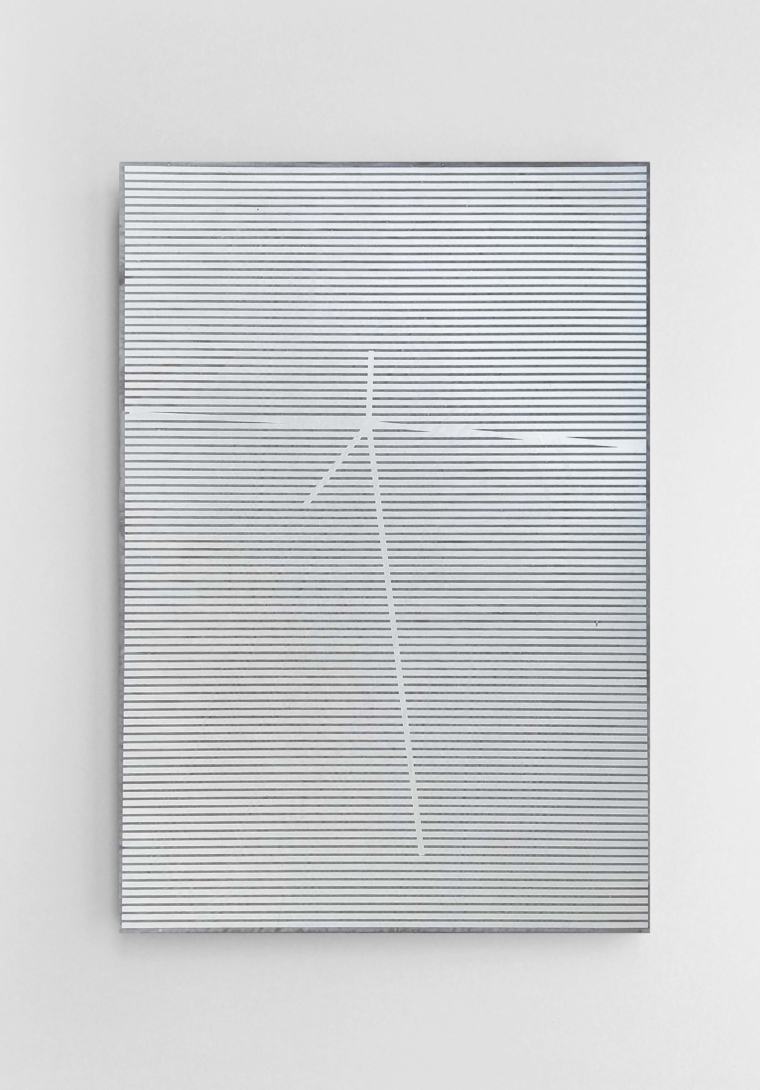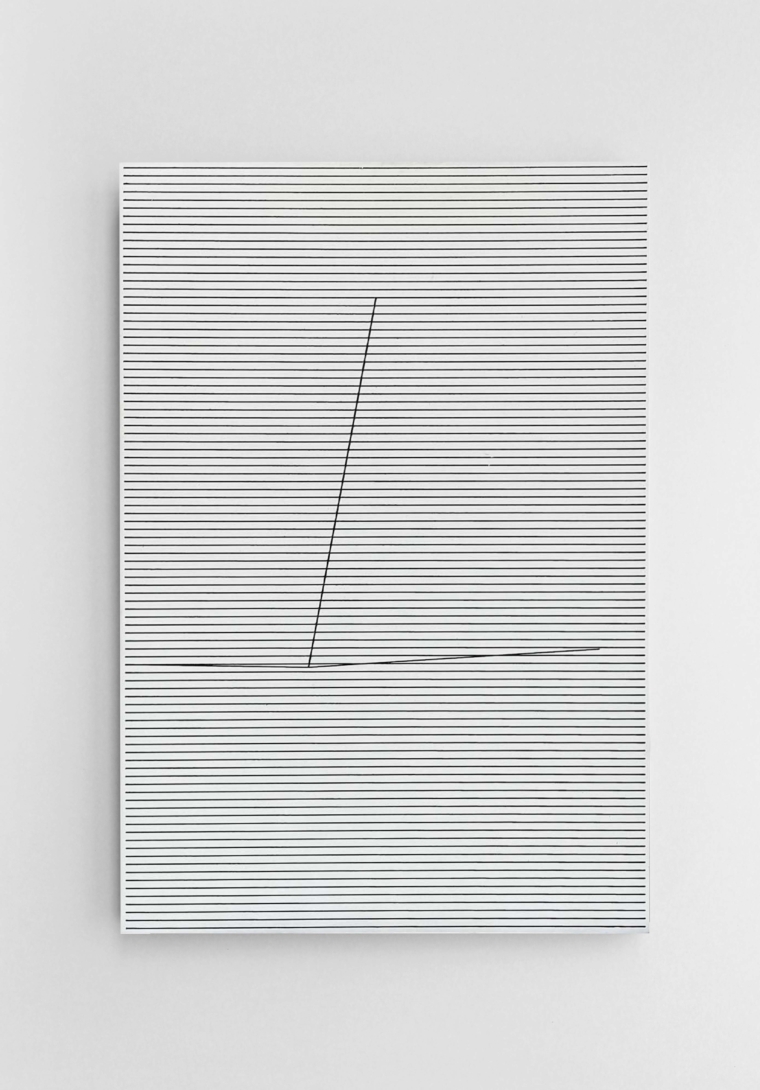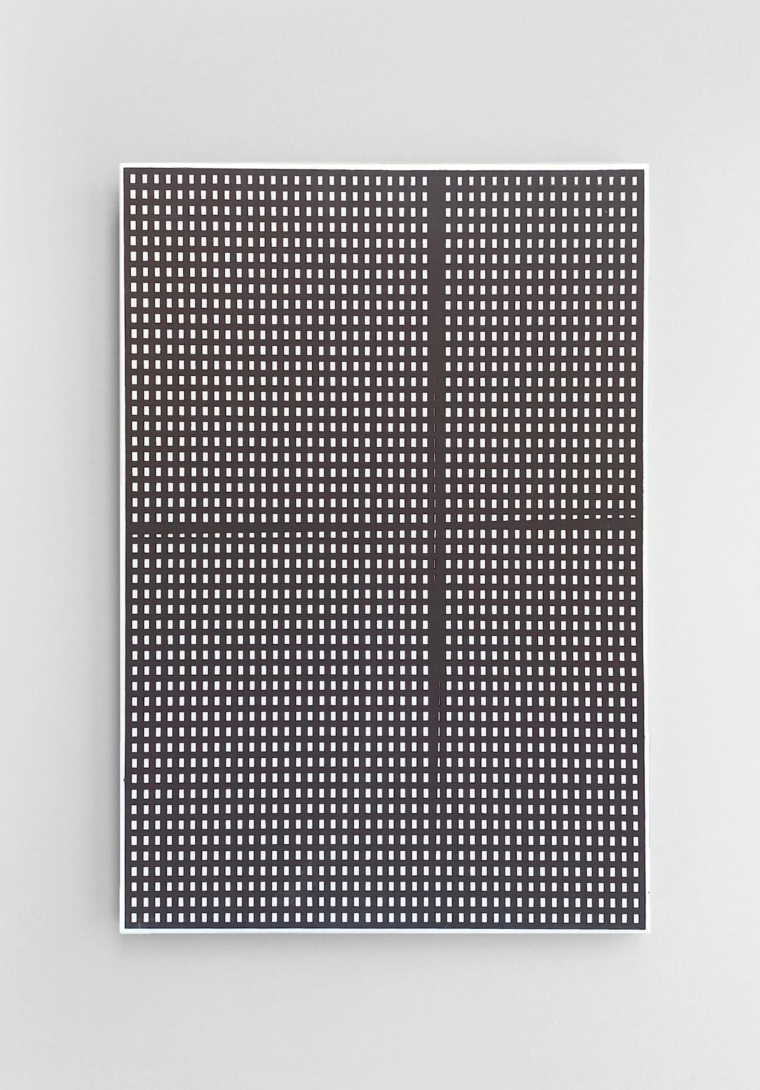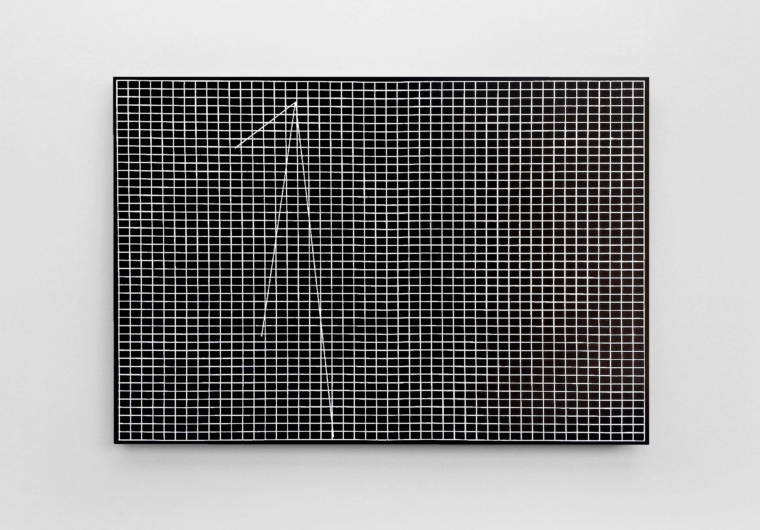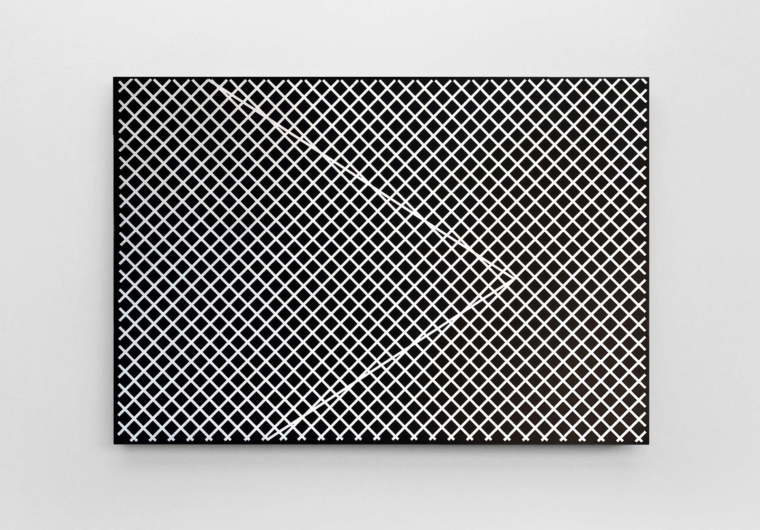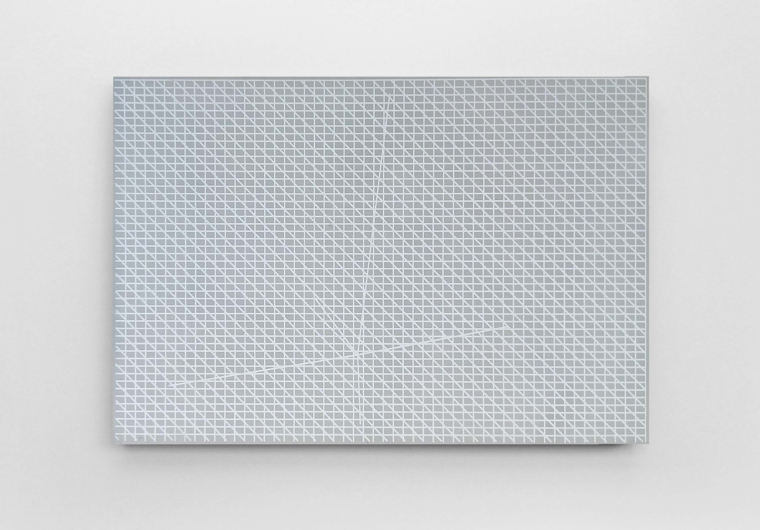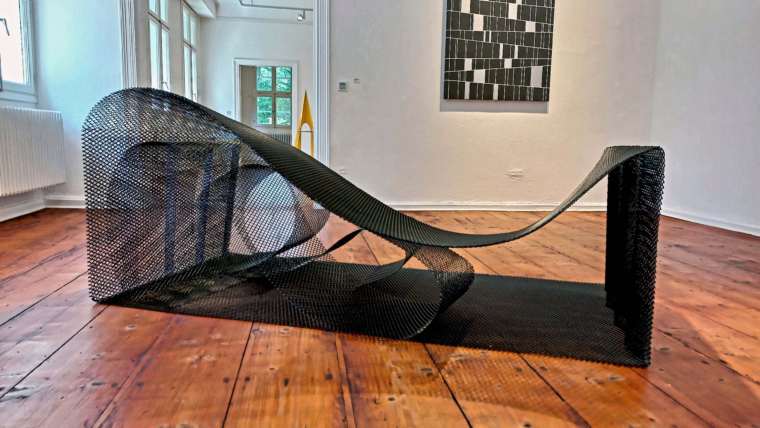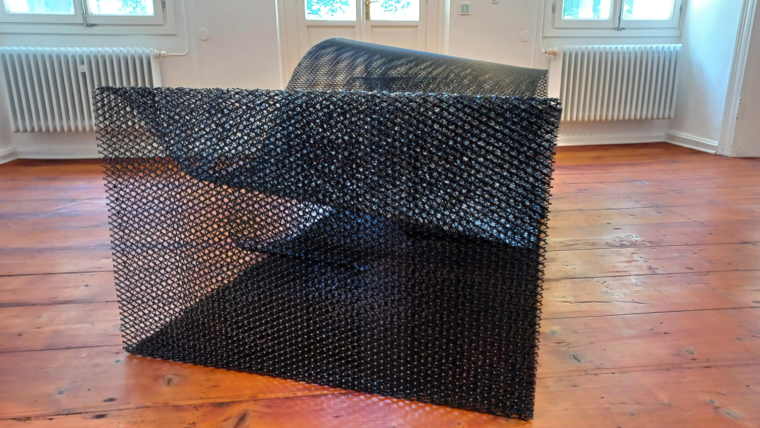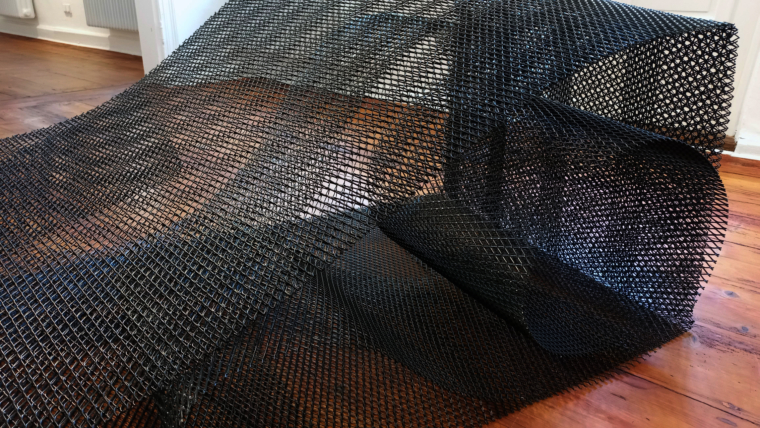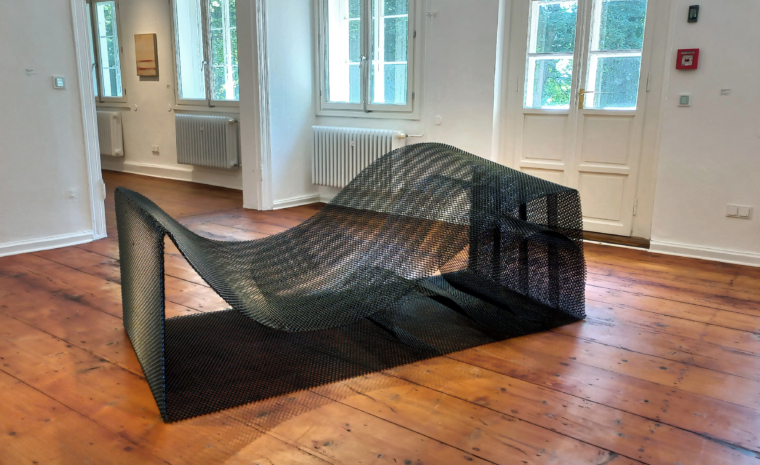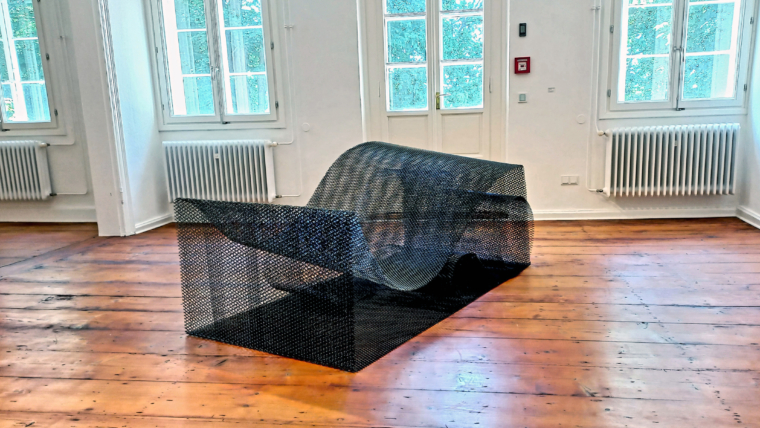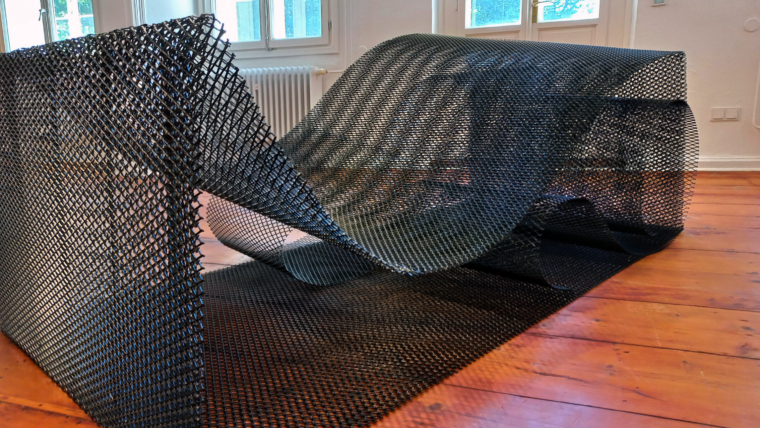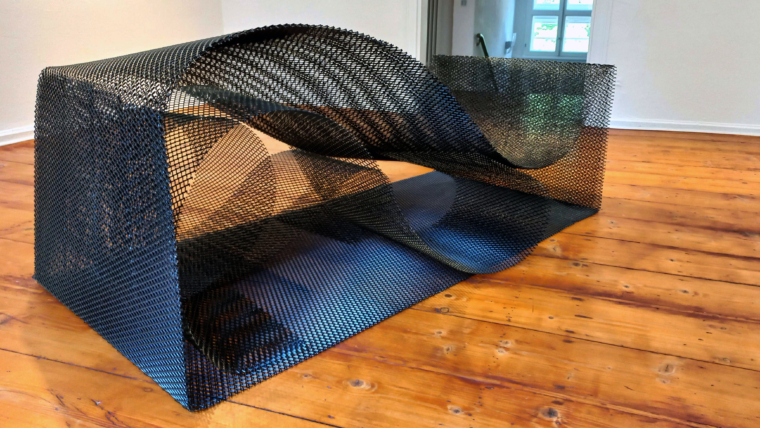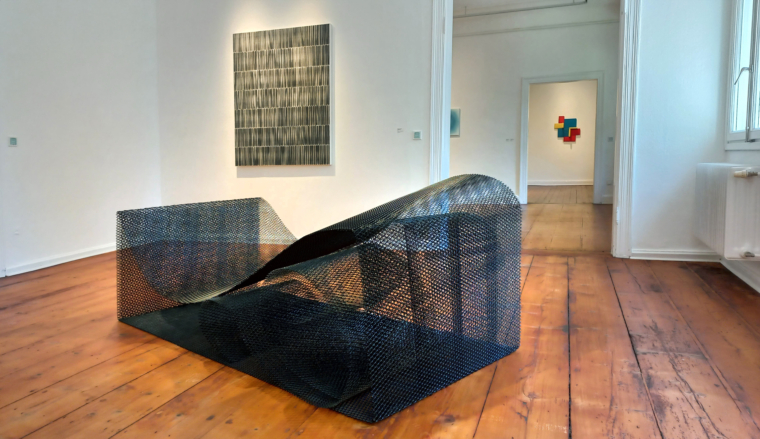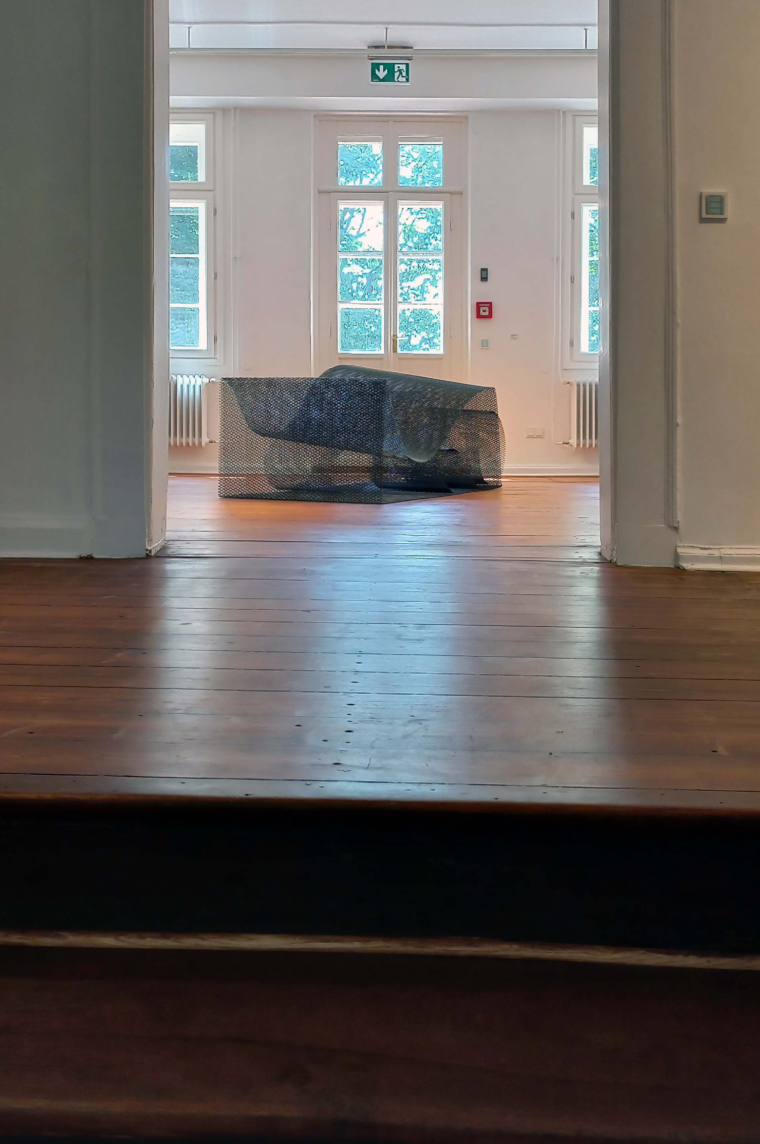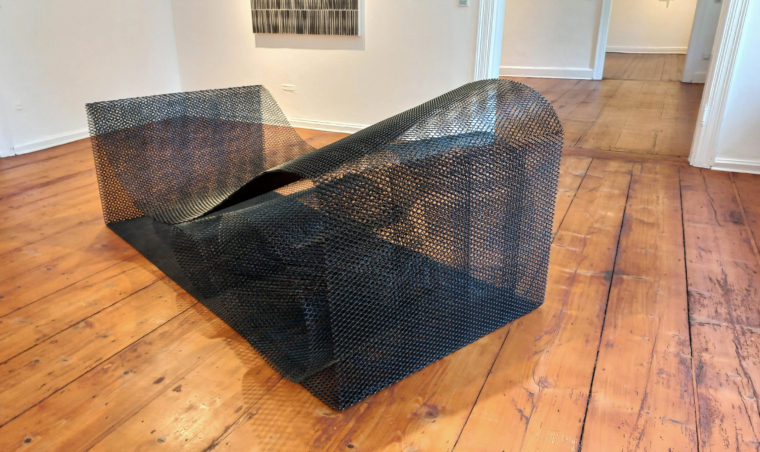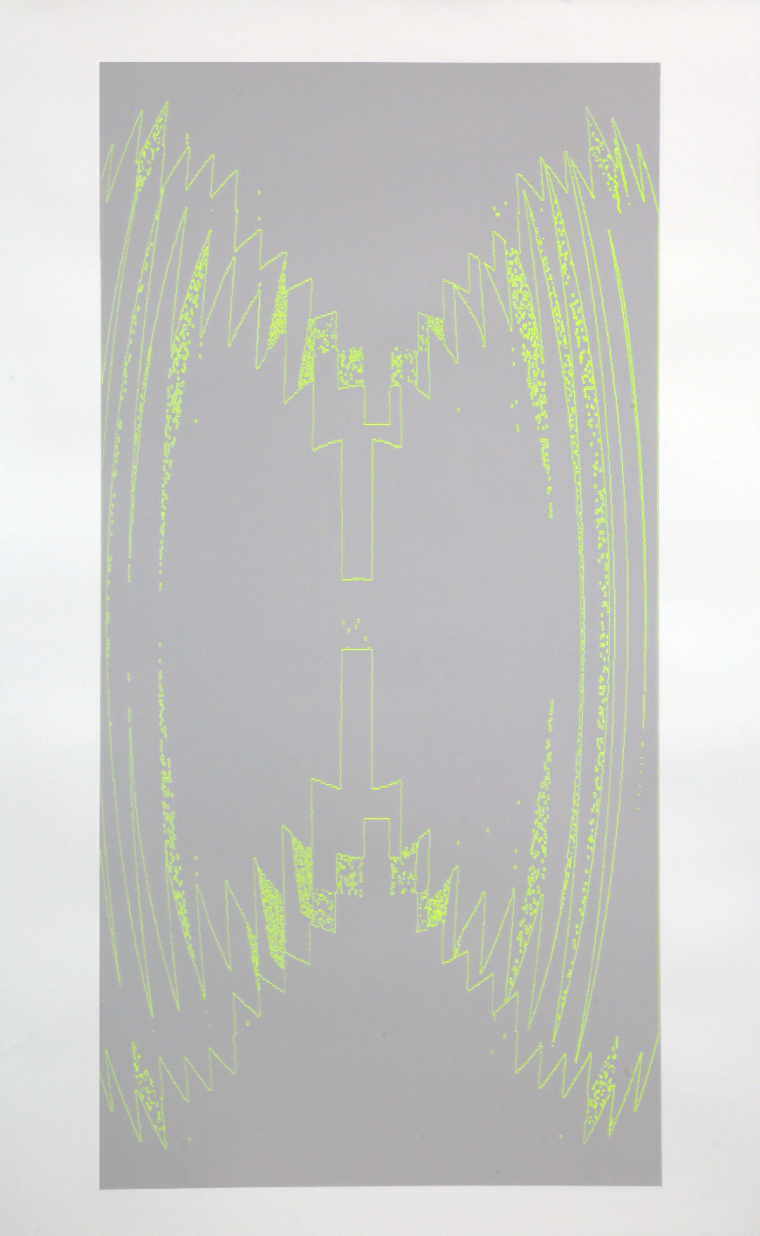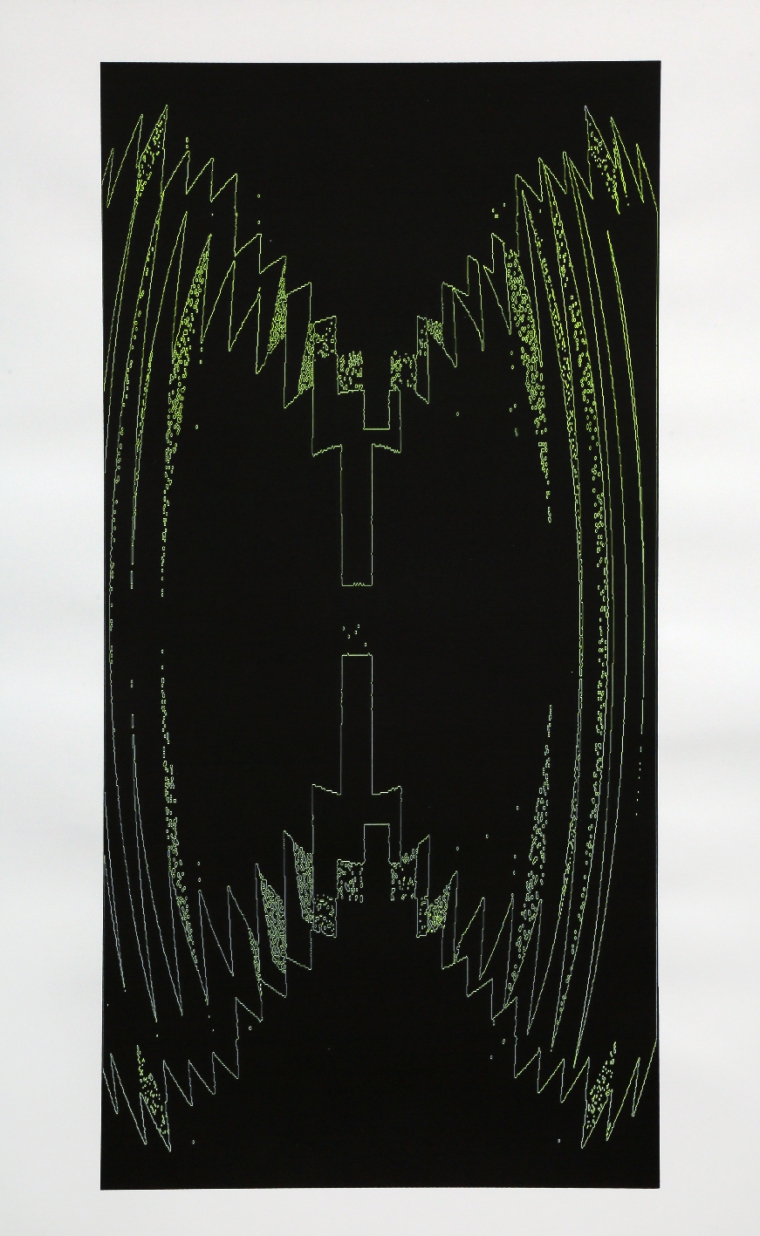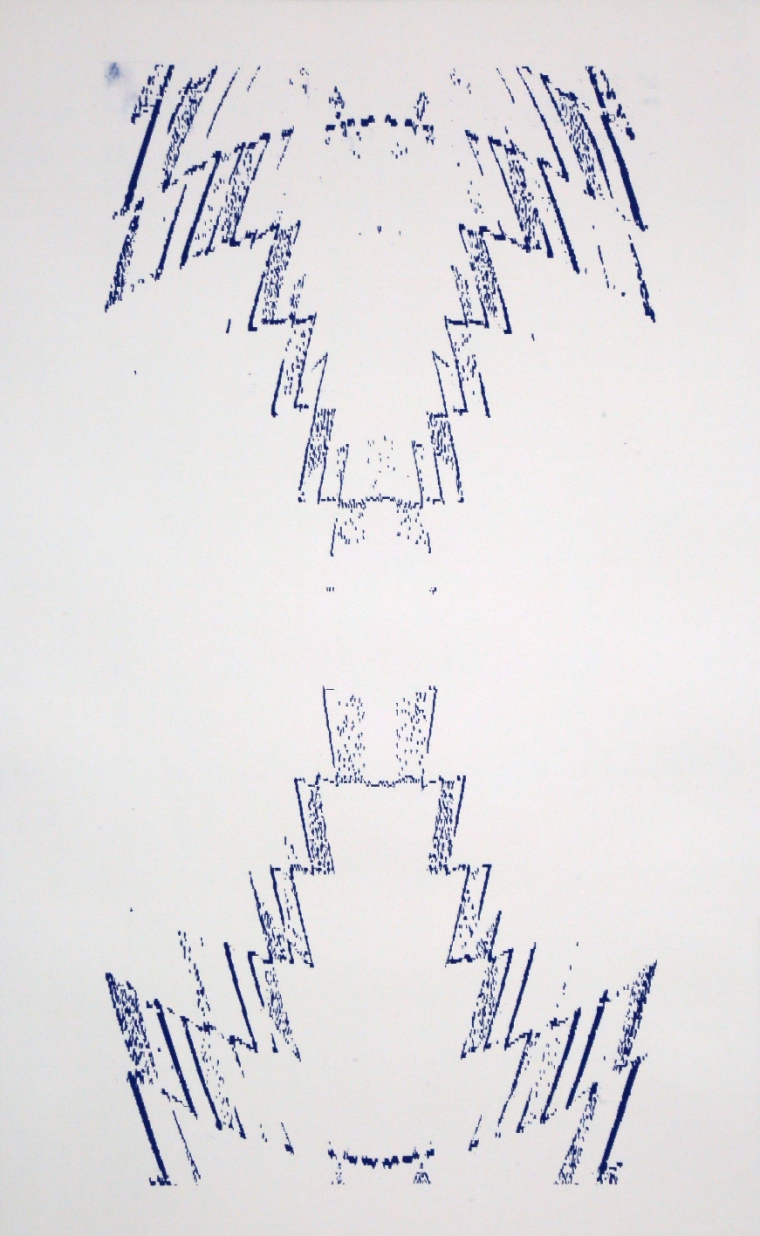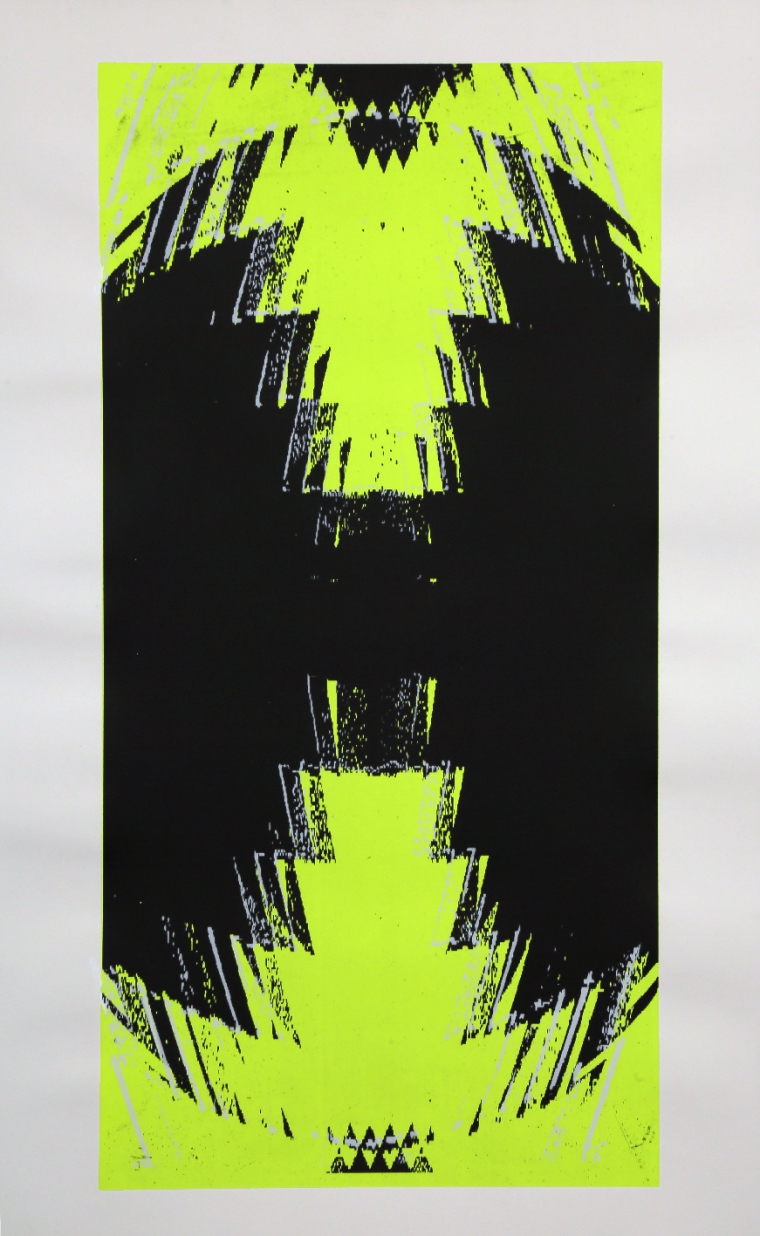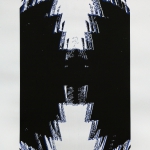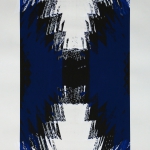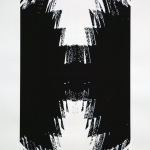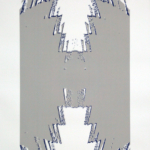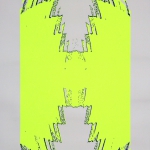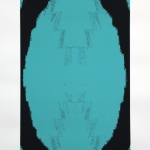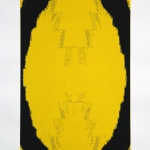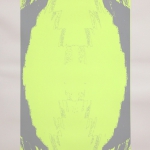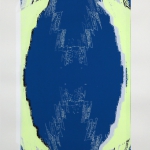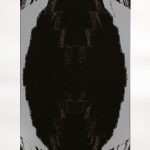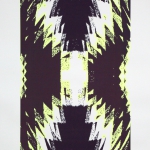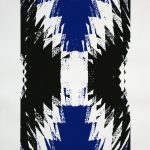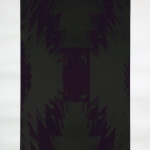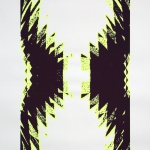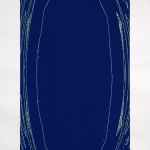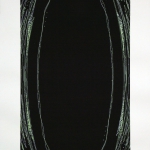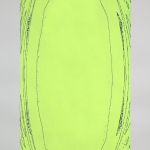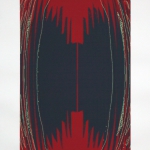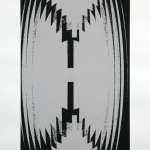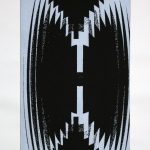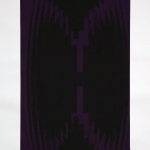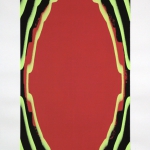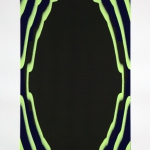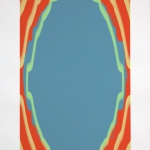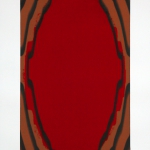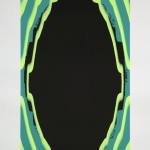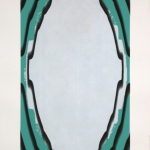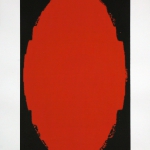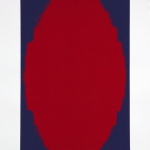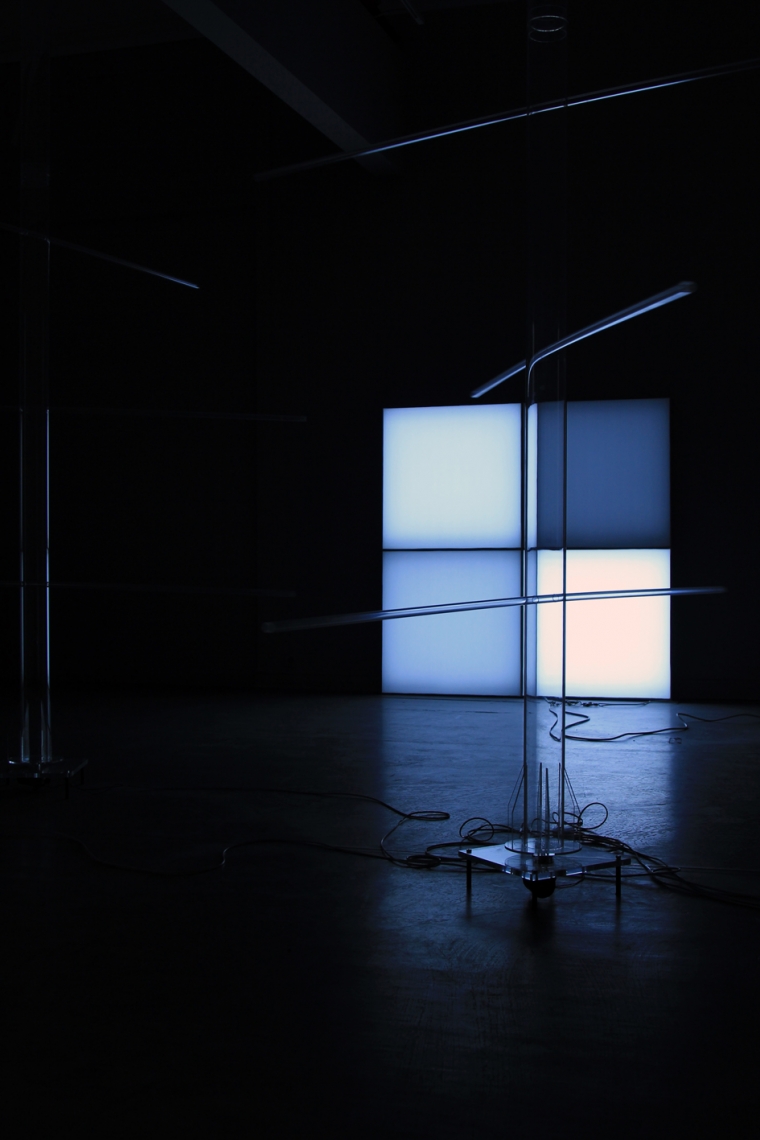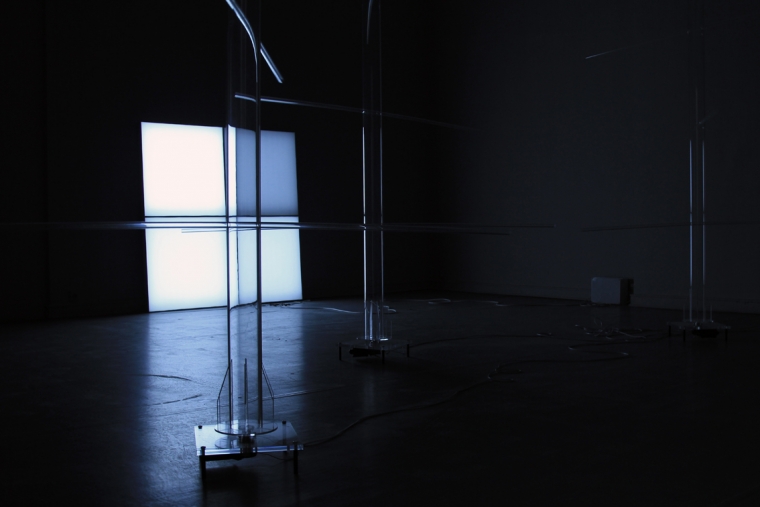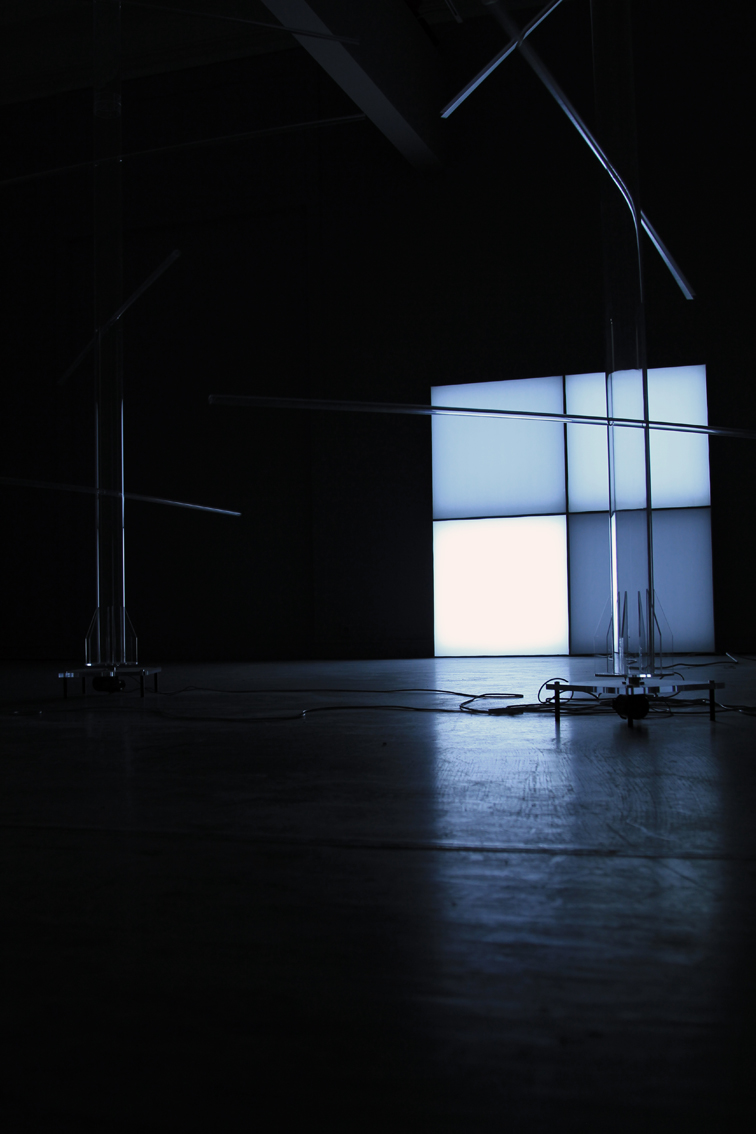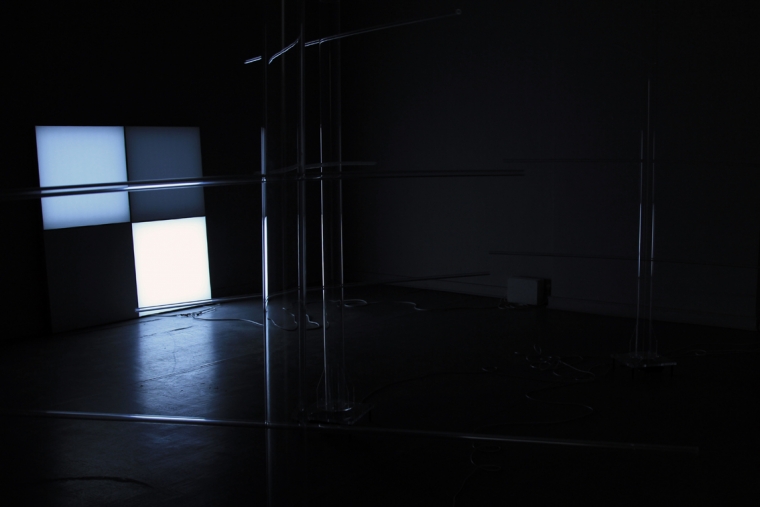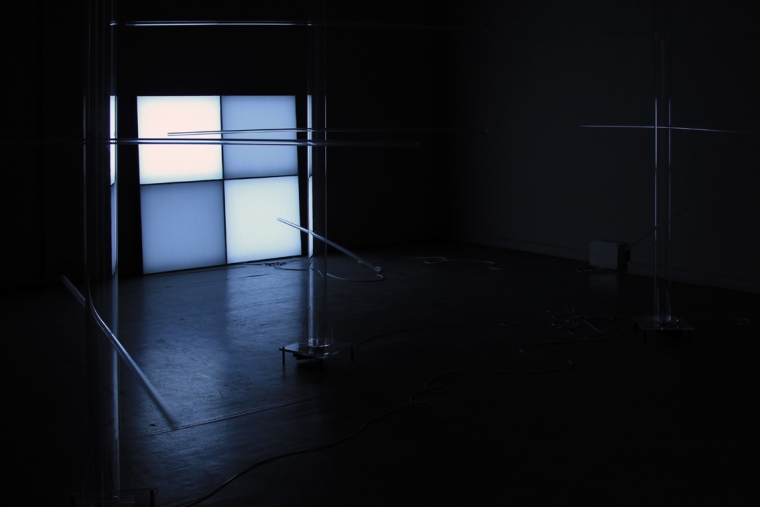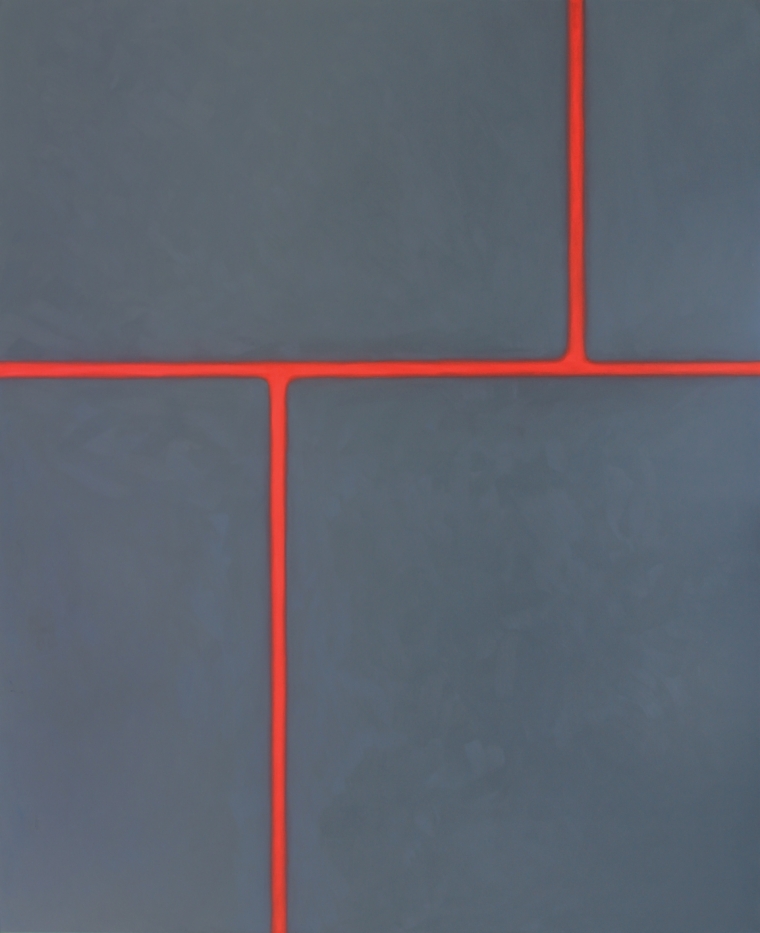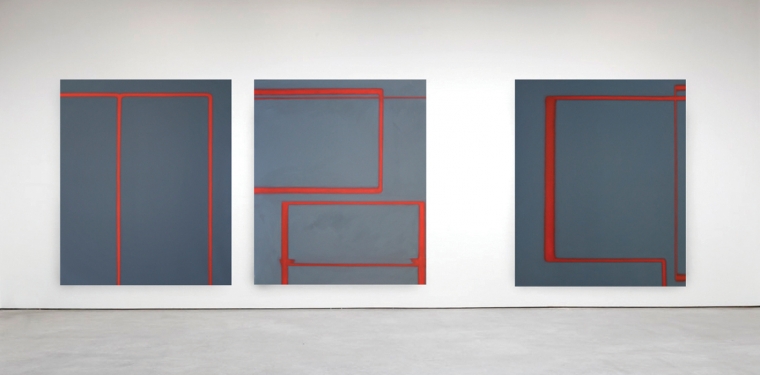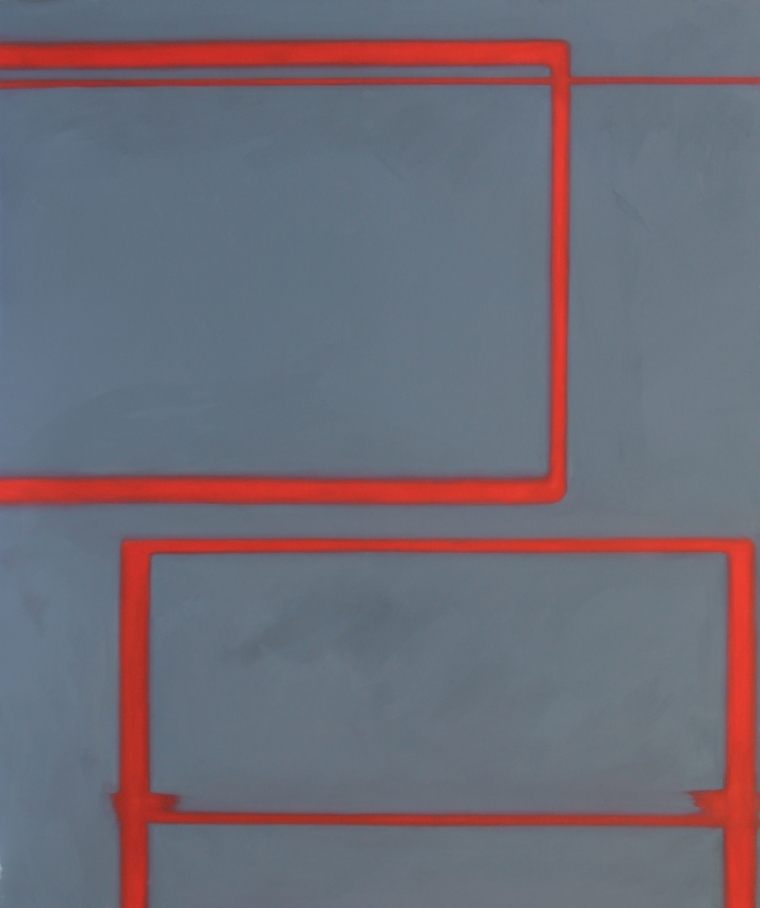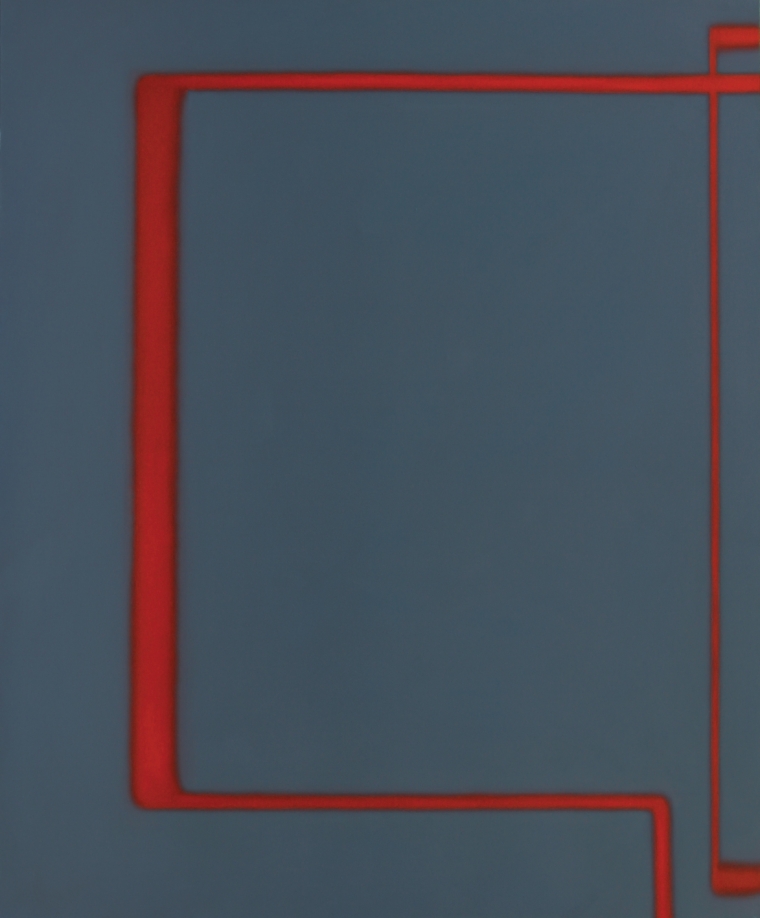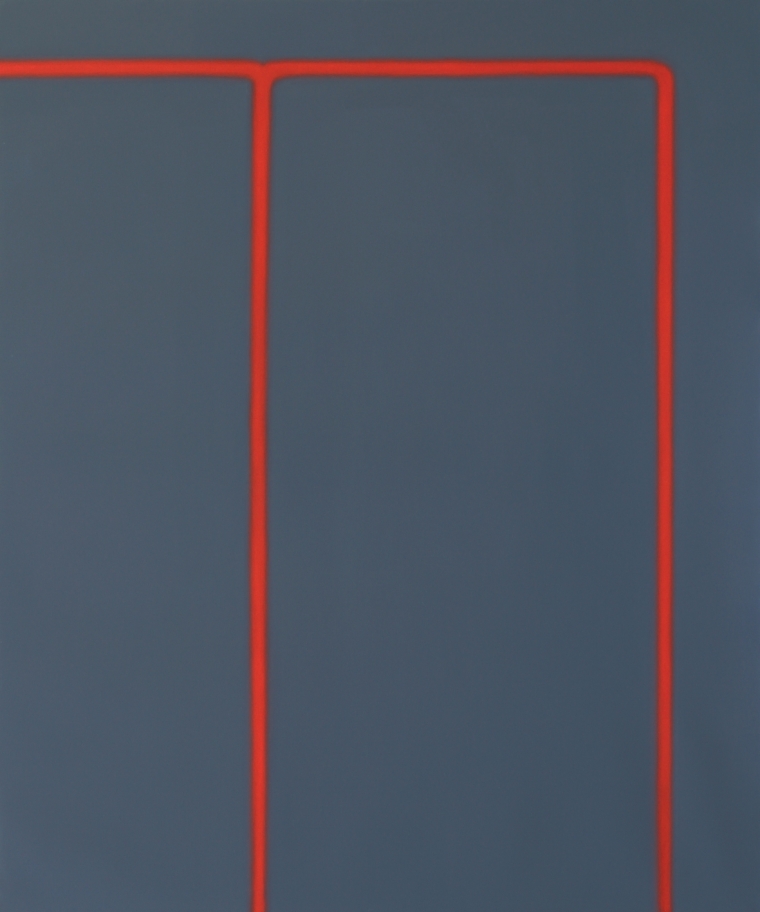ABSOLUTELY NOTHING
.
ABSOLUTELY NOTHING
.



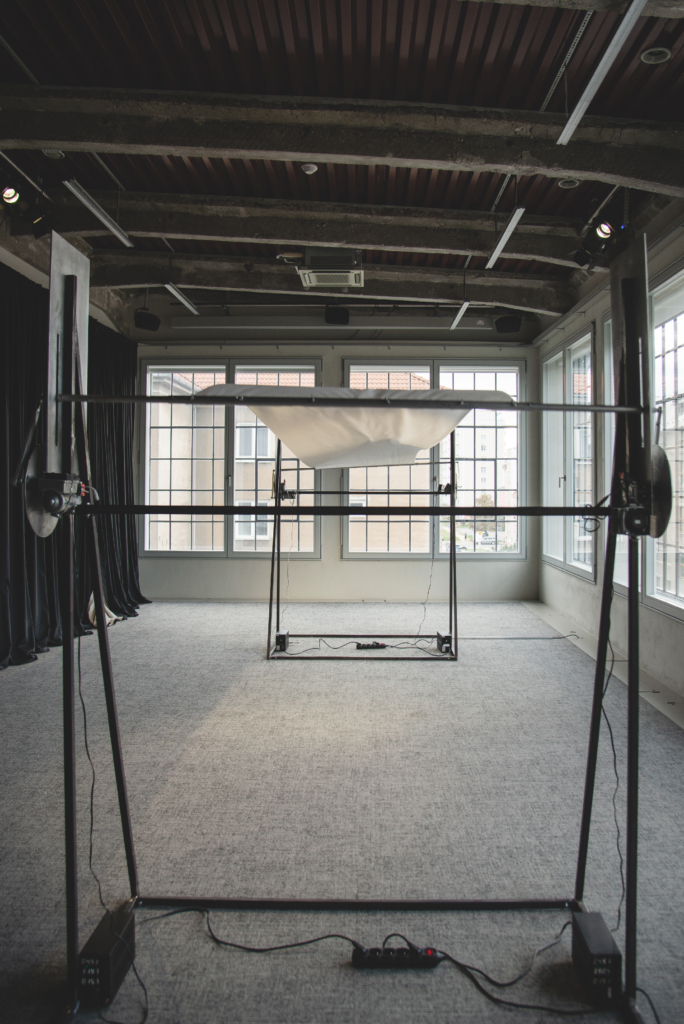
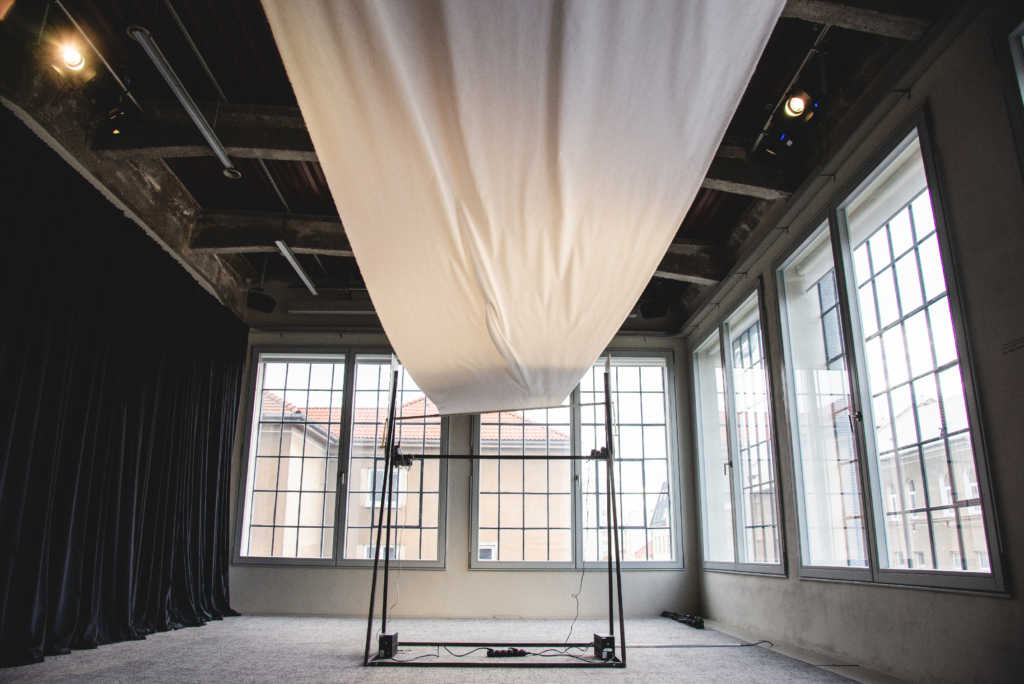
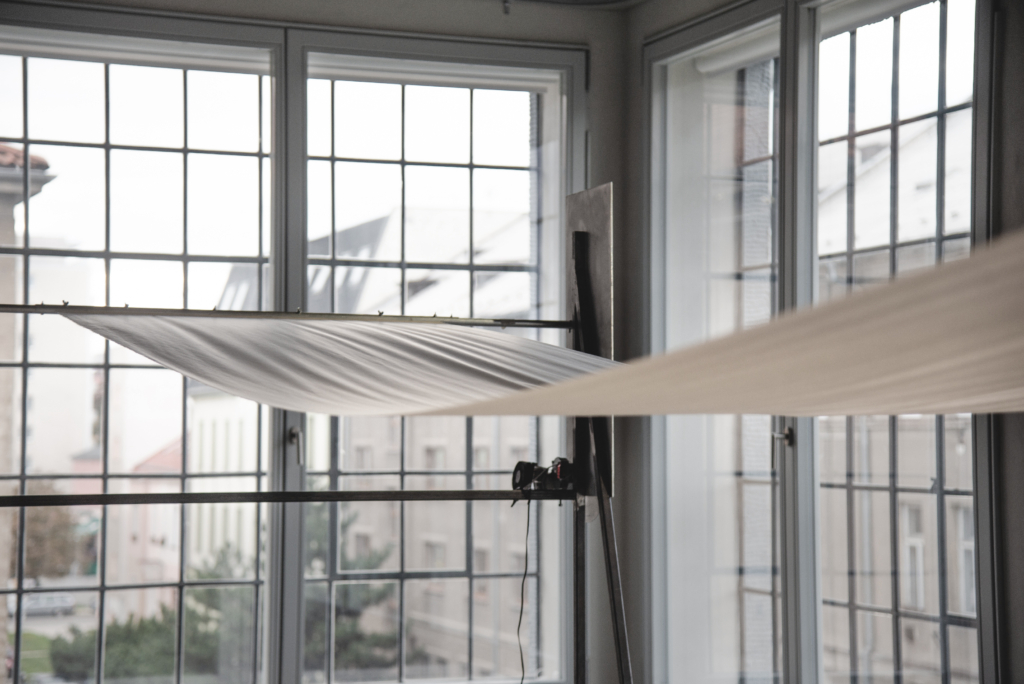
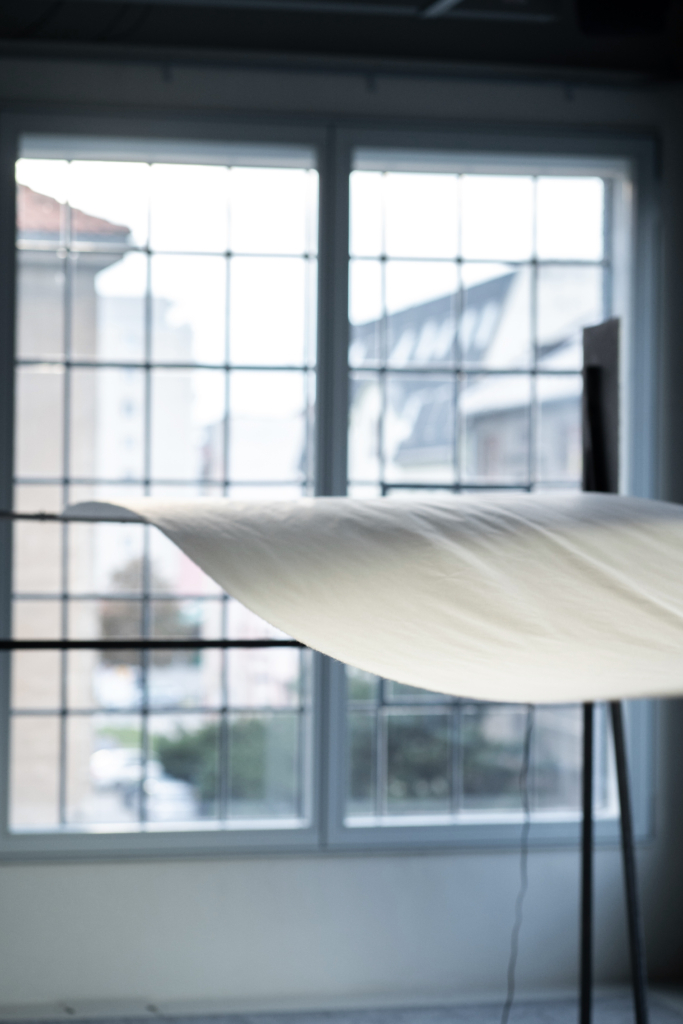
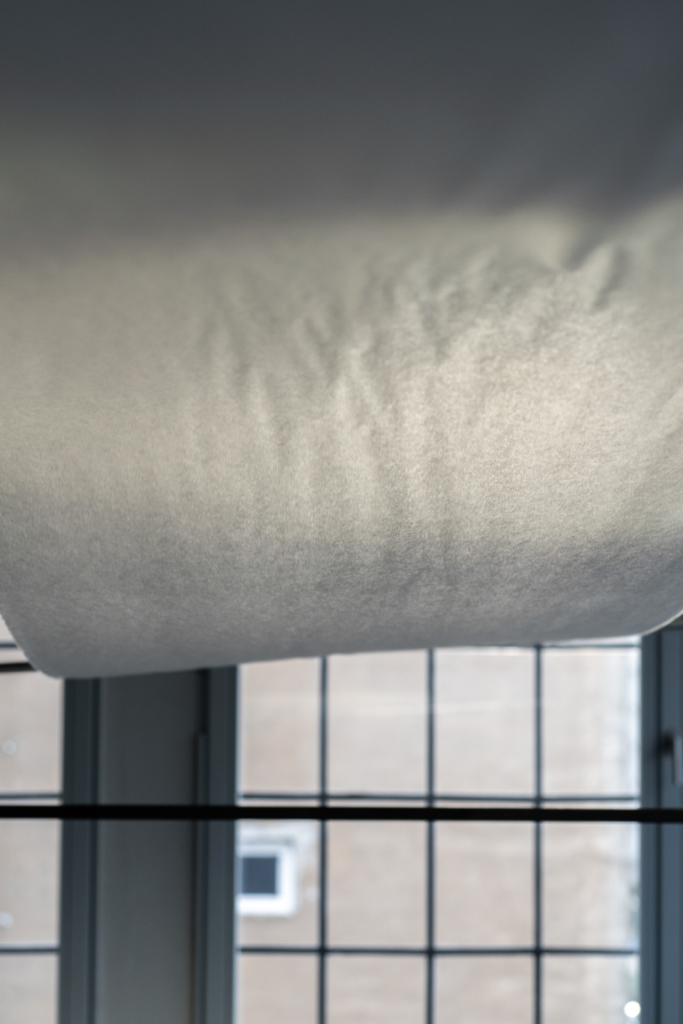

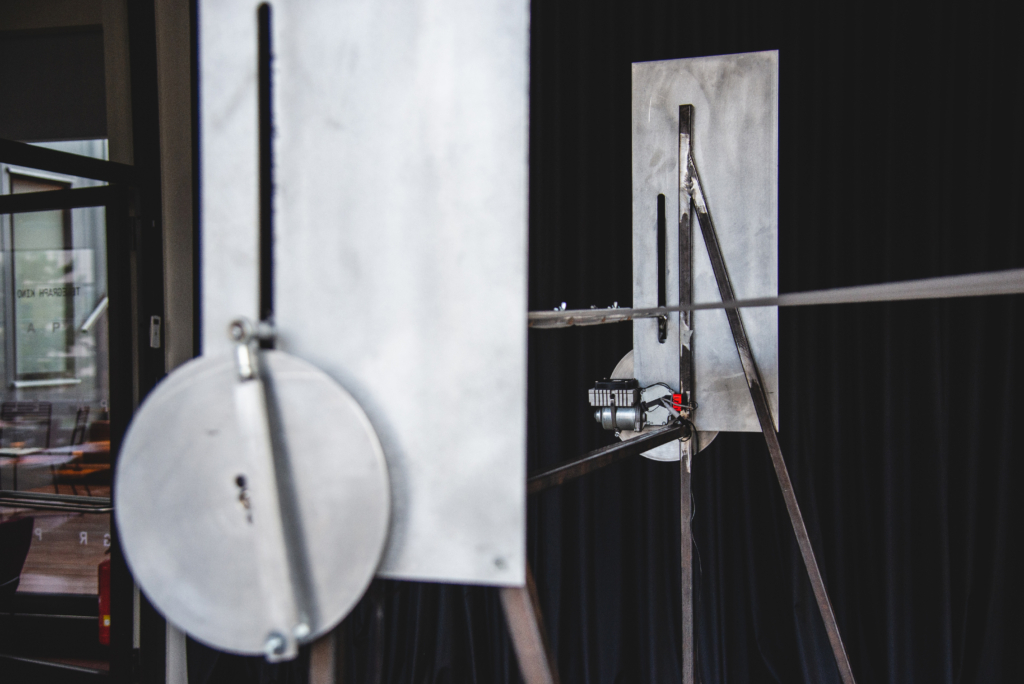

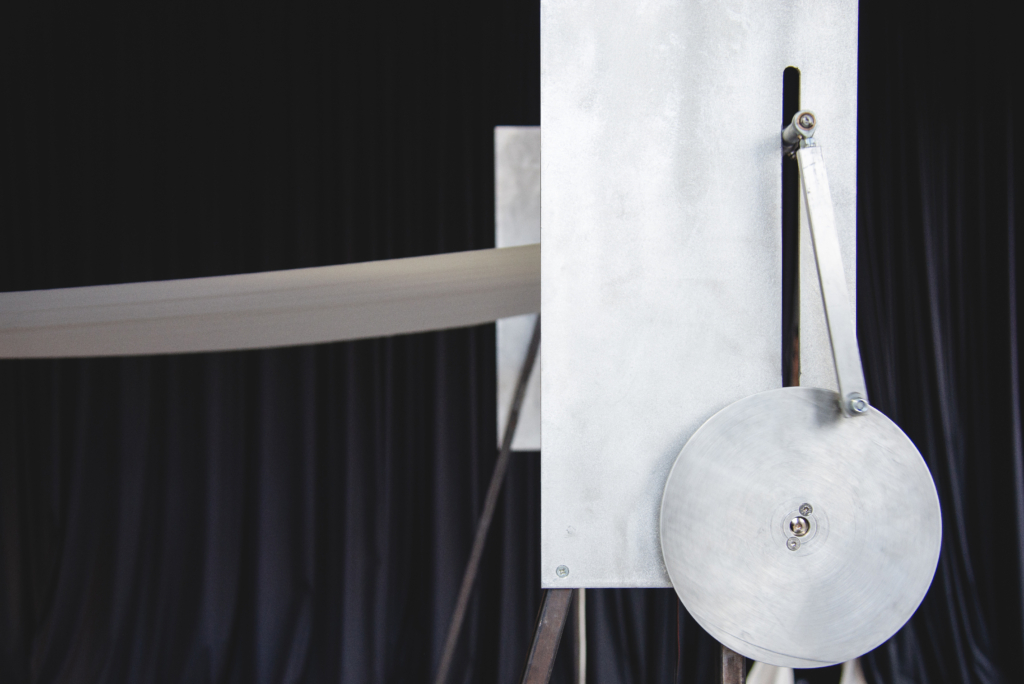
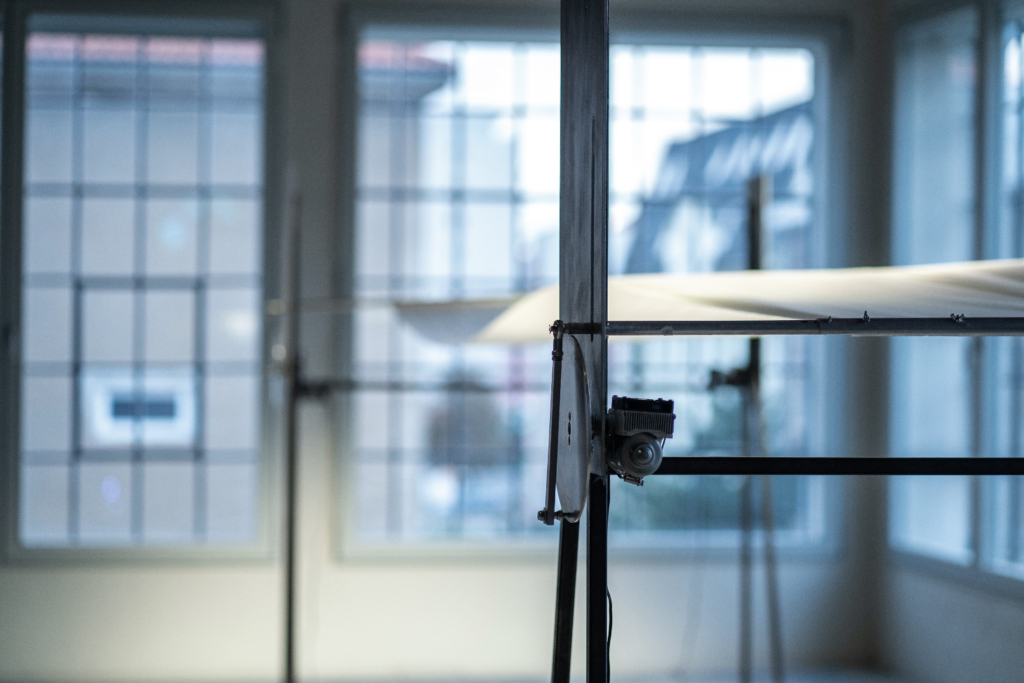
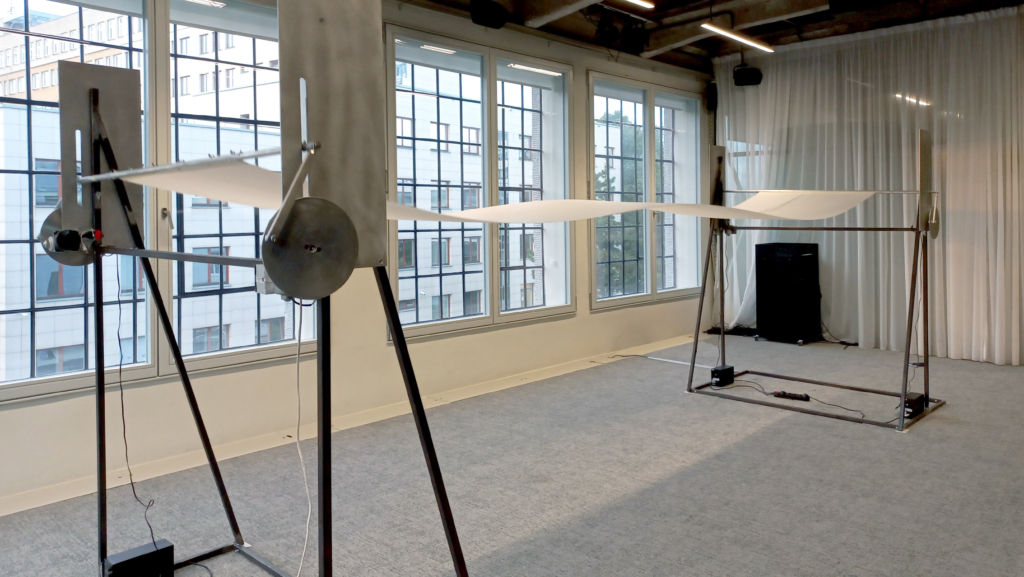

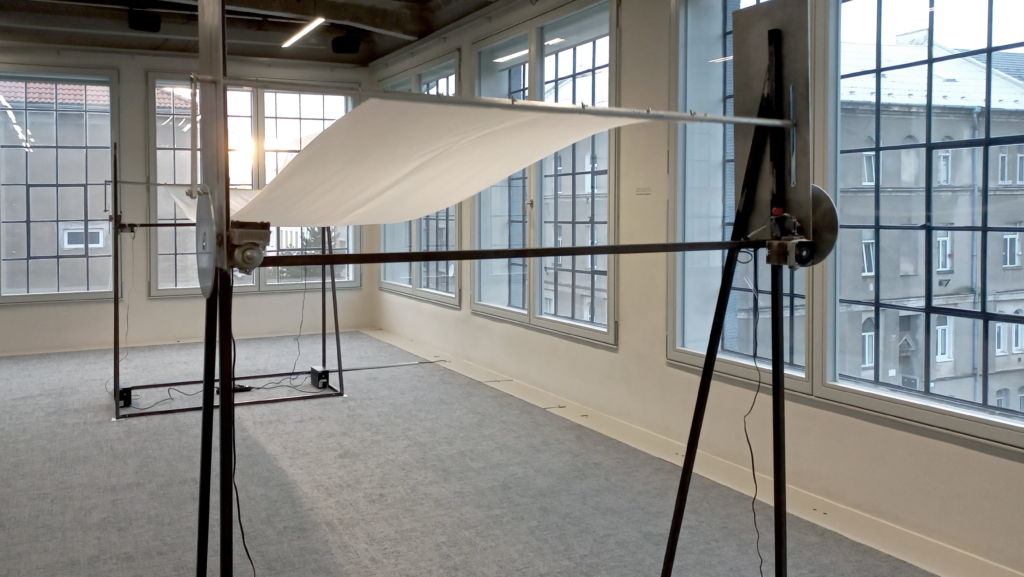
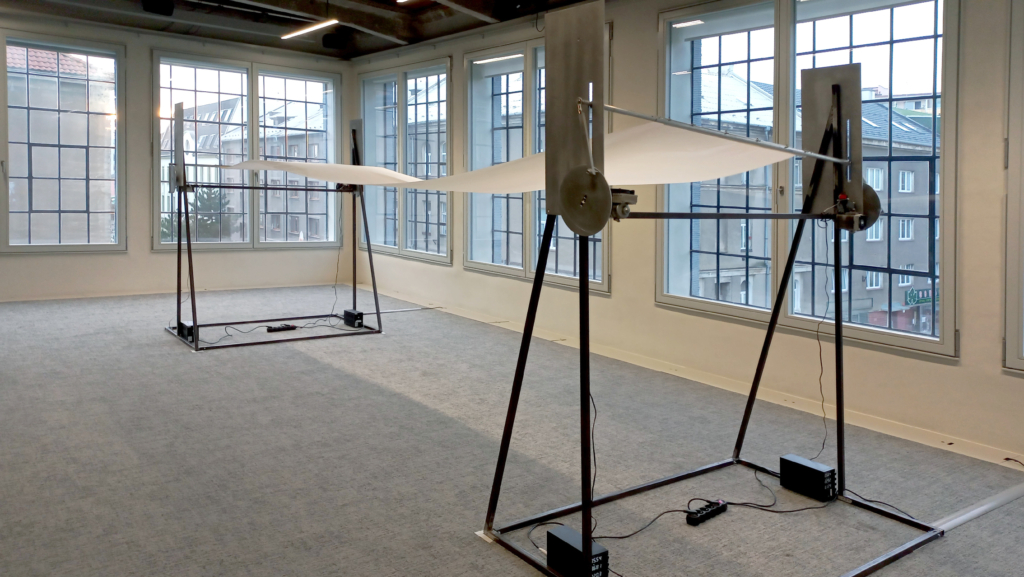
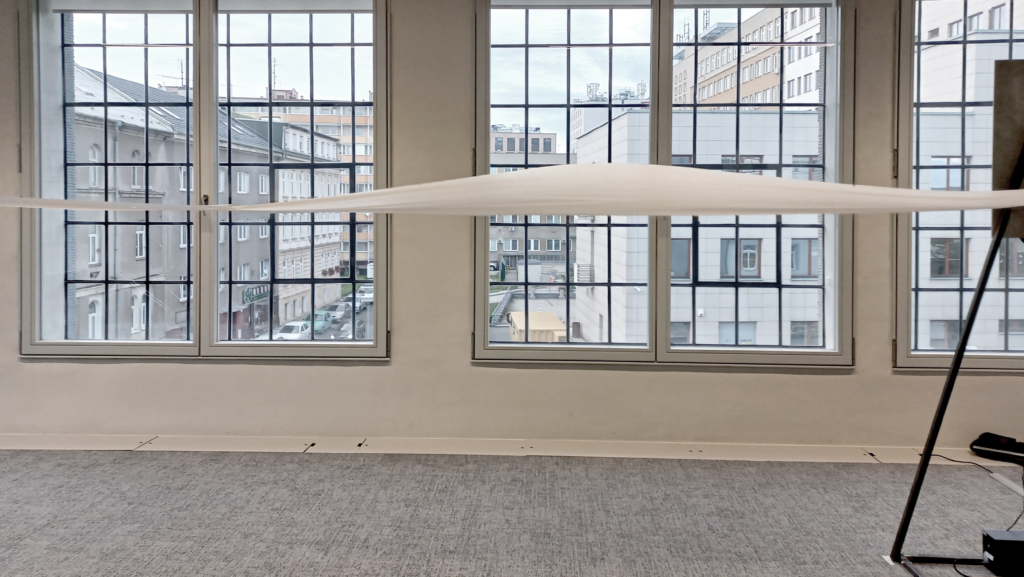
TELEGRAPH Gallery – Olomouc, solo exhibition by Mateusz Dabrowski – ABSOLUTELY NOTHING; 16/09 – 23/09/22; curator: Zbyněk Janáček; Foto: Vendula Burgrová;
ABSOLUTELY NOTHING Material: steel, engines, power supplies, aluminium, Japanese tissue paper; Dimension: 750 x 200 x 250 cm; Date: 2022
Absolutely Nothing
Telegraph Gallery, Jungmannova 3, Olomouc
16/09 – 23/09/2022
curator: Zbyněk Janáček
In ABSOLUTELY NOTHING we immediately notice the contrast. The contrast of the steel black structure, built by simple means, emphasizing the severity of the means, and at the same time creates something natural, objectively nice, aesthetically pleasing not only visually but also mentally. At first one notices the mechanical oppressiveness of forcing movement by means of simultaneous operation of motors, reinforced by repetitive sound. Organic movement is induced by an artificial mechanism created for this. The movement is triggered by a wave, which is inevitably associated with the movement of waves on the sea, it is very emotional, even sentimental, but not pretentious, it is something more. The existence of something organically ephemeral and elusive, a movement that is infinite and constantly changing. The waving tissue paper has a materiality as delicate as skin. Entering a contemplative state, the oppressiveness noticed at first becomes less important. What was interesting then as a whole, we now isolate fragments and details. The industriality of the object, the construction and mechanics have over time subordinated to subtlety and delicacy. Now only changes are visible. The provocative title reaches consciousness. “Absolutely Nothing”, this is the very state that can be experienced when looking towards the sea, when one feels emptiness, exists only here and now, when only the senses work.
—————————————————————————————————————–
W ABSOLUTELY NOTHING od razu zauważamy kontrast. Kontrast stalowej czarnej konstrukcji, zbudowanej prostymi sposobami, podkreślającej surowość środków, a zarazem tworzy coś naturalnego, obiektywnie ładnego, estetycznego nie tylko wizualnie ale też mentalnie. W pierwszej chwili dostrzega się mechaniczną opresyjność wymuszenia ruchu za pomocą symultanicznej pracy silników, wzmocnione repetytywnym dźwiękiem. Organiczny ruchu wywołany jest przez sztuczny mechanizm do tego stworzony. Ruch wyzwala fala, która nieuchronnie kojarzy się z ruchem fal na morzu, ma charakter bardzo emocjonalny, wręcz sentymentalny, ale nie pretensjonalny, jest czymś więcej. Zaistnienie czegoś organicznie ulotnego i nieuchwytnego, ruchu nieskończonego i nieustająco zmiennego. Falująca bibuła ma materialność delikatną jak skóra. Wchodząc w stan kontemplacyjny, opresyjność zauważona z początku staje się mniej ważna. To co było interesujące wtedy jako całość, teraz wyodrębniamy fragmenty i detale. Industrialność obiektu, konstrukcja i mechanika z czasem podporządkowała się subtelności i delikatności. Teraz widać jedynie zmiany. Dociera do świadomości prowokacyjny tytuł. „Absolutely Nothing”, to jest właśnie ten stan, którego można doświadczyć patrząc w stronę morza, kiedy odczuwa się pustkę, istnieje tylko tu i teraz, kiedy pracują jedynie zmysły.
KODA
CENTRE
FROZEN WAVE
KURēN
KURēN
INTO THE OZ
BARDO vol 3 -EMBODIMENT-
.
BARDO vol 3 -EMBODIMENT-
.
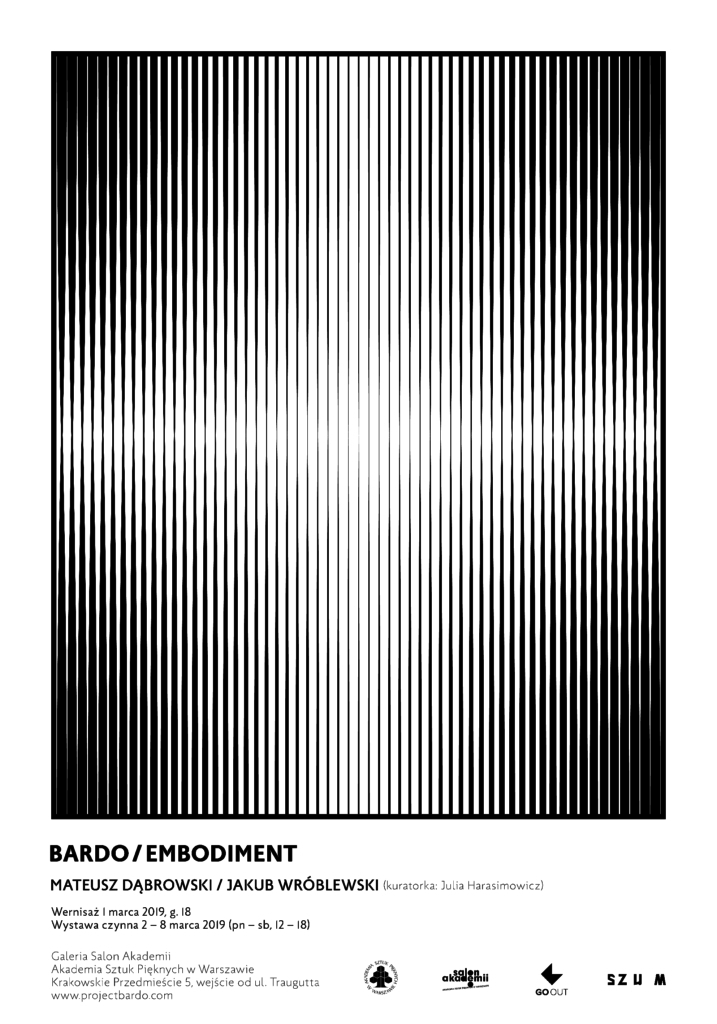
design Mateusz Machalski
BARDO vol3 EMBODIMENT/ Mateusz Dąbrowski, Jakub Wróblewski
SALON AKADEMII GALLERY
01/03 – 08/03/2019
curator Julia Harasimowicz
Bardo (skt. antarabhava; Wylie: bar do) – literally translated is an intermediate state. A Tibetan Buddhist term for any transitional state of existence: life, meditation, sleep, death. Most commonly used to refer to the intermediate state between death and subsequent birth.
The artistic and research project Bardo, led by Mateusz Dąbrowski and Jakub Wróblewski since 2013, refers to popular terms from the borderline of science and intellectual fashions during successive instalments. The artists have developed a particular model of collaboration. They always create two autonomous projects, connected by the exhibition space and the leitmotif. Embodiment is the third instalment of the series, created after a six-year break from showing the previous one. The title of the latest presentation, which is not fully translatable, can be widely translated as embodiment or embodiment.
The show at the Academy Salon is a summary not so much of the project itself, but above all of the two artists’ recent formal explorations, which have allowed them a new quality of interpretation of the chosen slogan. More than intellectual analysis, they are more concerned with the audience’s affective contact with the resulting works.
Mateusz Dąbrowski continues his search for movement and technique. The artist’s starting point is a reflection on the nature of technology, in which he tries to go beyond thinking in terms of nature-culture oppositions and looks for universal commonalities. He focuses on the meaning of the term embodiment and embodiment itself, and analyses the possibility of translating ideas into matter.
Jakub Wróblewski explores the issue of embodiment through an interactive VR experience. The result of his reflections is a play with the almost classic transhumanist fantasy of life extension through the virtual world. The artist refers to the genesis of the project, the Tibetan bardo, as a space for the individual experience of death. The designed action requires the viewer to participate fully and alone in the virtual reality. The artists have entirely renounced any attachment to a specific medium and focus on inducing a sense of suspension in the viewer.
Julia Harasimowicz
Mateusz Dąbrowski continues his search related to the movement and technology, initiated in 2018 at the exhibition Caterpillar at the Zachęta Project Room. The starting point for the artist is the reflection on the nature of technology, in which he tries to go beyond thinking in the nature-culture oppositions, Dąbrowski looks for universal common features. In Salon Akademii he focuseson the meaning of the very term of incarnation and embodiment, analyses the possibilities of putting the idea before matter. The most important means of presenting these concepts are two physical phenomena – light and motion. For Dąbrowski, an object is the embodiment of an idea, but the visual form will always in a way remain a simplification.
1 Andrew D. Wilson, Sabrina Golonka, Embodying cognition is not what you think, transl. Monika Włudzik, Przemyslaw Nowakowski, ‘Avant’ 2014, vol. 1, no. 1, p. 22.
Dąbrowski divides the gallery space into zones. In the first of them, there are irregular objects with a crystal structure. Synthetic materials and a form referring to nature make the object unobvious. Vertical forms move in a mechanical way, like a cogwheel, but theyare not without small suspensions and delays. So, the artist points out that the monotonous rhythm refers to the dynamics seen in nature. Objects also make the viewer to interact with motion, to take the right pose to pass them or passively observe them from a safe distance. They also form a kind of obstacle ahead of the next zone where the light installation Timeline is located. Lightboxes shine in a variable and rapidly changing rhythm. The author says: “There is no fixed point, […] there is a new relationship between the elements. It is impossible to actualize the idea in it. This object cannot be embodied. I am interested in the fragmentary nature and the failing thoughts of something in interpreting something. Also what is elusive, devoid of real forms.” As viewers, we see dynamic systems, but due to the physical barrier, they become even more obscure to us.
Julia Harasimowicz
——————————————————————————————————————–
Mateusz Dąbrowski kontynuuje swoje poszukiwania związane z ruchem i techniką, zainicjowane w 2018 roku na wystawie Caterpillar w Miejscu Projektów Zachęty. Punktem wyjścia dla artysty jest refleksja nad naturą technologii, w której próbuje wyjść poza myślenie w opozycjach natura–kultura, Dąbrowski szuka uniwersalnych cech wspólnych. W Salonie Akademii skupia się na znaczeniu samego terminu wcielenia i ucieleśnienia, analizuje możliwości przełożenia nad materię idei. Najważniejszymi środkami przedstawienia tych koncepcji są dwa zjawiska fizyczne – światło i ruch. Obiekt dla Dąbrowskiego jest ucieleśnieniem idei, jednak zawsze na swój sposób forma wizualna pozostanie jej uproszczeniem.
1 Andrew D. Wilson, Sabrina Golonka, Ucieleśnienie poznania to nie to, co myślisz, przeł. Monika Włudzik, Przemysław Nowakowski, „Avant” 2014, vol. 1, nr 1, s. 22.
Dąbrowski dzieli przestrzeń galerii na strefy. W pierwszej z nich znajdują się nieregularne obiekty o strukturze kryształu, przypominające nieco odprysk z ruchomej formy Caterpillar. Syntetyczne materiały i nawiązująca do natury forma sprawiają, że obiekt ma nieoczywisty status. Wertykalne formy poruszają się w sposób mechaniczny, jak koło zębate, ale niewolne są od drobnych zawieszeń i opóźnień. Artysta wskazuje jednak, że monotonny rytm odnosi się do dynamiki dostrzeganej w naturze. Obiekty wymuszają także interakcję z ruchem widza, który musi przybrać odpowiednią pozę, aby wyminąć je lub biernie obserwować z bezpiecznej odległości. Tworzą również formę przeszkody przed kolejną sferą, w której znajduje się świetlna instalacja Timeline. Lightboxy świecą w różnym i szybko zmieniającym się rytmie. Autor mówi: „nie ma punktu stałego, […] zachodzi coraz to nowa relacja pomiędzy elementami. Nie da się w niej konkretu idei urzeczywistnić. Nie da się tego obiektu ucieleśnić. Interesuje mnie fragmentaryczność i niezatrzymujące się myśli o czymś, w interpretowaniu czegoś. Także to, co jest nieuchwytne, pozbawione form rzeczywistych”. Jako widzowie dostrzegamy dynamiczne układy, ale za sprawą fizycznej bariery stają się dla nas jeszcze mniej uchwytne.
Julia Harasimowicz
PATHS
CATERPILLAR
.
CATERPILLAR
.
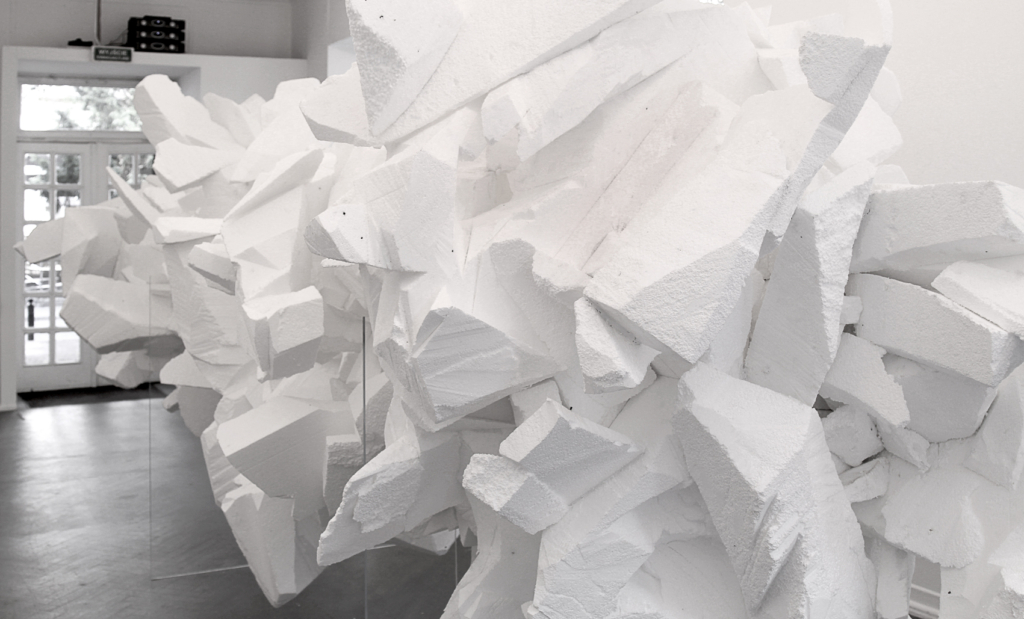
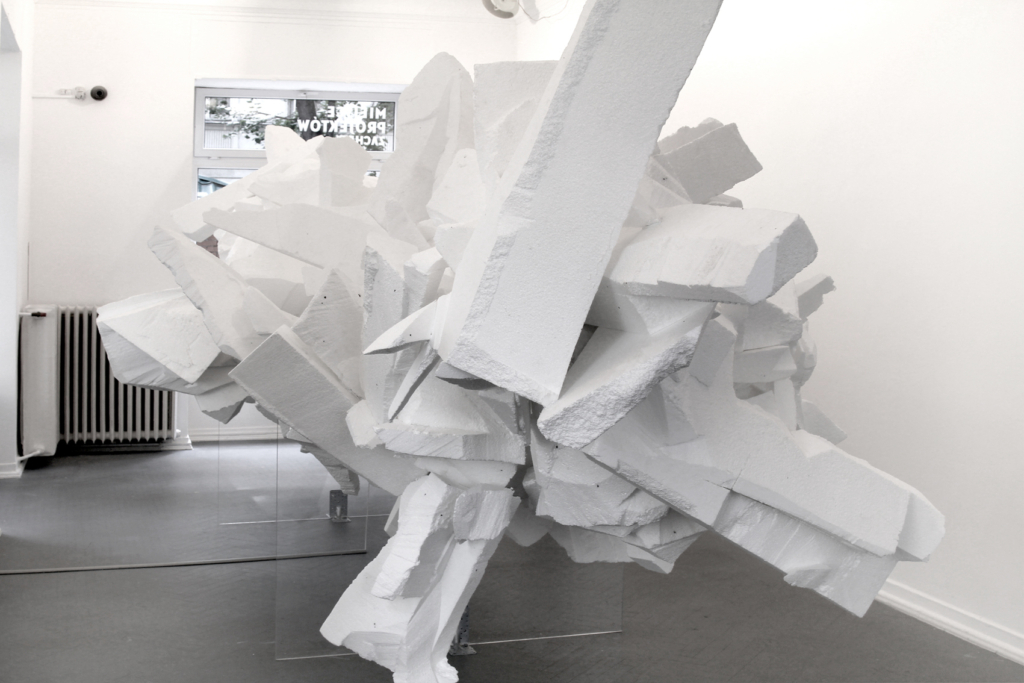
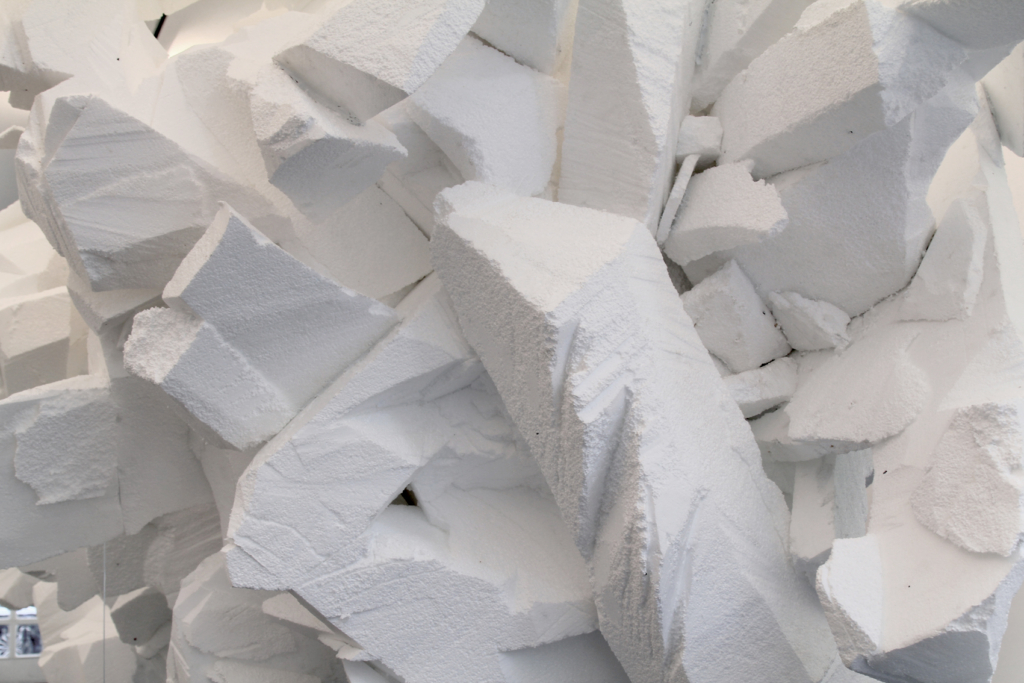
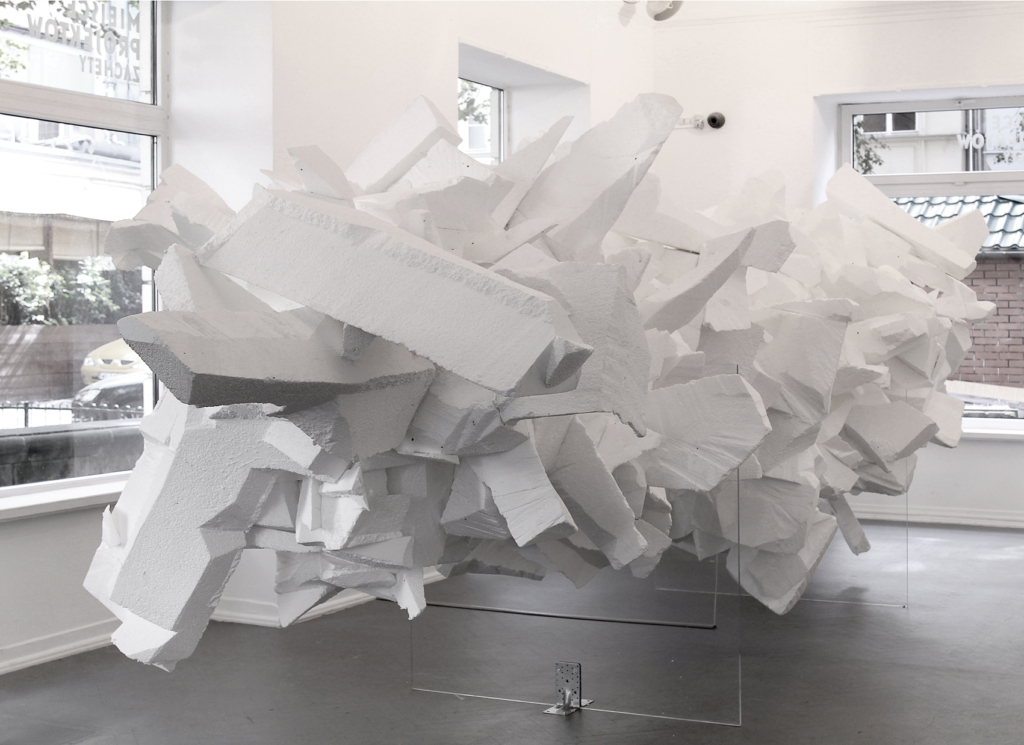
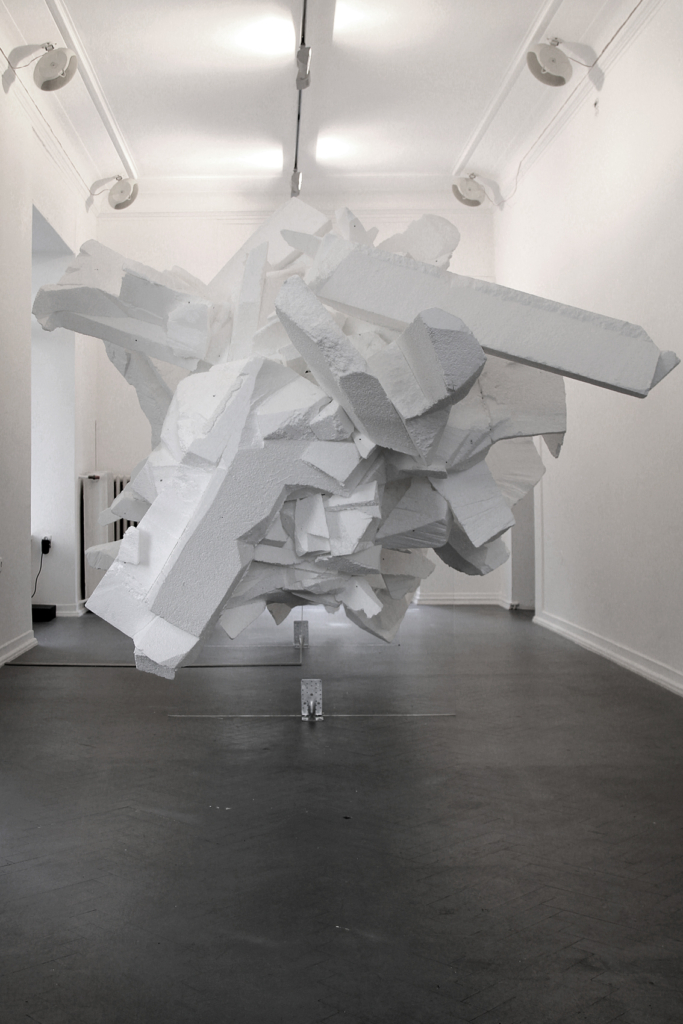

CATERPILLAR Material: styrofoam, steel, pleksiglas; Dimension: 670 x 280 x 280 cm; Date: 2018
CATERPILLAR
Zachęta Project Room – Zachęta National Art Gallery
26/05 – 22/07/2018
curator Magda Kardasz
“CATERPILLAR is an allegory of the movement of bodies, the rhythm of nature, organisms and evolutionism. In its assumption, it refers to the determinism of continuous change, the struggle for the survival of every matter.
CATERPILLAR is a part of a process of events, which continues endlessly. It is a form of a bizarre mechanism, a great clock, where time and space are a relative unity. The elements rotating at different speeds do not allow the viewer to identify and observe any regular layout. The form seems to be an incidental, a magnetised body attracting dozens of crushed, angular objects, like clusters of unspecified minerals set in circular motion.” – Mateusz Dąbrowski
Sculptures came alive, prints sprang out of the frames.
“..For years my work has been connected with the problem of perception, or more precisely
with its limitations, visual manipulation. It concerns phenomena that we do not notice, do not
understand, but which exist and have an impact on man and reality..” Mateusz Dąbrowski
The favorite creative form used by Mateusz Dąbrowski is the translation of observations and feelings into abstract forms. In his latest project, CATERPILLAR, presented in the Zachęta Project Room (MPZ), the artist continues to explore the motifs, at the same time expanding the borders of the meaning of sculpture and printmaking – his favorite visual techniques. The CANAPONE sculpture presented in the gallery basement has the form of a large metal spring- generator set into vibration by infrasounds. They imitate waves we normally do not register, even though they have a huge influence on our mood or even on the way our bodies work. Only after a moment of looking at the object does the viewer notice the vibration of the metal rings, which build up gradually. The sculpture, seemingly still, takes on features of a living organism. The box carrying the sculpture, wadded with gray, fluffy felt similar to fur, increases the impression that you are dealing with a biological object. Close to the piece of art described above, the artist affixed prints cut out in foil to the wall. The black shapes look like living organisms, cells seen through the microscope, ghosts from a cartoon or Oriental calligraphy. Similar abstract forms, inspired by photographs, including traces of various objects, were hitherto printed by Dąbrowski on small sheets of paper. At the MPZ exhibition, the artist plays with size, enlarges the objects to enormous scale, building an unusual relation between the graphic sign and architecture. This simple measure effectively changes the perception of the lower rooms of the gallery. With the CATERPILLAR sculpture installation, created specifically for the Zachęta Project Room, the artist deepens his interest in problems from the border of art, philosophy and science. He experiments with a material that is new to him – Styrofoam. The first thing noticed by the viewer is a white, large, angular lump, which seems to float above the gallery floor. The object is similar to a huge caterpillar, a fragment of an iceberg drifting on water, a cloud or a mechanism of unknown purpose. The industrial-like impression is strengthened by the gallery interiors – the author uncovered the old radiators and pipes that had been discreetly hidden behind white curtains during other exhibitions. Further contemplation allows the viewer to notice that the horizontal shape is movable – its components rotate about their axes, to different rhythms and in various directions. The sculpture has no single, final shape. It metaphorically refers to the relativity and subjectivity of time and movement. The importance to Mateusz Dąbrowski of acting on the verge of art, nature/corporeality and science/ technology is seen in the title given to the installation and to the exhibition as a whole. CATERPILLAR is not only the name of an animal species, but also a globally famous provider of mining and building machinery. Dąbrowski says about his kinetic, interactive sculpture: “The project is to be an allegory of the movement of celestial bodies, a representation of the rhythm of nature, of living organisms with various heartbeats and breathing patterns or different biochemical reaction times.” Evidently, the artist sees multiple possible readings of his art. We might call the CATERPILLLAR exhibition the praise of the constant change in time, an attempt to grasp the ongoing evolution of the world.
Magda Kardasz
Text published in the folder of the exhibition
Mateusz Dąbrowski CATERPILLAR
Zachęta Project Room – Zachęta National Gallery of Art
——————————————————————————————————————–
Rzeźby ożyły, grafiki wyszły z ram
“Moja praca od lat związana jest przede wszystkim z tematem percepcji, a właściwie z jej
ograniczeniami, manipulacją wizualną. Dotyczy zjawisk, których nie zauważamy, których nie
rozumiemy, a które istnieją i mają wpływ na człowieka i rzeczywistość.”
Mateusz Dąbrowski
Ulubioną metodą twórczą Mateusza Dąbrowskiego jest przekładanie obserwacji i wrażeń na formy abstrakcyjne. W swoim najnowszym projekcie CATERPILLAR, prezentowanym w Miejscu Projektów Zachęty, artysta kontynuuje te wątki, poszerzając jednocześnie granice pojęcia rzeźby i grafiki – swoich ulubionych technik wizualnych. Rzeźba CANAPONE, prezentowana w podziemiach galerii, ma formę dużej metalowej sprężyny-generatora, wprawianej w drgania przez infradźwięki. Imitują one fale, których zazwyczaj nie rejestrujemy, choć mają one duży wpływ na nasze samopoczucie czy nawet funkcjonowanie organizmu. Dopiero po chwili obserwacji obiektu widz zaczyna dostrzegać drgania metalowych okręgów, które się wzmagają. Pozornie statyczna rzeźba nabiera cech żywego organizmu. Obite włochatym, przypominającym sierść szarym filcem pudło, na którym ustawiona jest rzeźba, wzmacnia wrażenie biologiczności obiektu. W pobliżu opisanej pracy artysta umieścił na ścianie grafiki wycięte z folii. Czarne kształty przypominają żywe organizmy, komórki obserwowane pod mikroskopem, duszki z kreskówki czy dalekowschodnią kaligrafię. Podobne, inspirowane fotografiami abstrakcyjne formy, zawierające ślady przedmiotów, Dąbrowski odbijał dotychczas na papierze niewielkich rozmiarów. W MPZ bawi się skalą, powiększa kształty do ogromnych rozmiarów, budując niezwykłą relację graficznego znaku i architektury. Ten prosty zabieg skutecznie zmienia percepcję dolnych sal galerii. W stworzonej z myślą o przestrzeni Miejsca Projektów Zachęty instalacji rzeźbiarskiej zatytułowanej CATERPILLAR artysta pogłębia swoje zainteresowania z pogranicza sztuki, filozofii i nauki. Eksperymentuje z nowym dla siebie materiałem – styropianem. Widz zobaczy najpierw białą kanciastą bryłę dużych rozmiarów, wydającą się unosić nad podłogą galerii. Obiekt przypomina ogromną gąsienicę, fragment góry lodowej dryfujący po wodzie, obłok bądź mechanizm o nieznanym przeznaczeniu. Wrażenie industrialności wzmacnia widok wnętrza galerii – autor odsłonił stare kaloryfery i rury, na potrzeby innych ekspozycji skrzętnie ukrywane za białymi ścianami-zasłonami. Dłuższa kontemplacja pozwala dostrzec, że poziomy kształt jest ruchomy – jego poszczególne człony obracają się wokół własnej osi, w odmiennym rytmie i kierunku. Opisana rzeźba nie ma jednego, skończonego kształtu. Metaforycznie odnosi się do względności i subiektywności czasu oraz ruchu. O tym, jak ważne jest dla Mateusza Dąbrowskiego działanie na styku sztuki, natury/cielesności i nauki/techniki, świadczy tytuł nadany instalacji oraz całej wystawie. CATERPILLAR to po angielsku gąsienica, ale także znana na całym świecie firma produkująca maszyny górnicze i budowlane. O swojej kinetycznej, interaktywnej rzeźbie Dąbrowski mówi: „Projekt ma być alegorią ruchu ciał niebieskich, przedstawieniem rytmu natury, organizmów żywych o różnym rytmie serca i oddechu, czy odmiennym czasie reakcji biochemicznych”. Jak widać, artysta zakłada wielość możliwych odczytań swoich dzieł. Wystawę CATERPILLLAR można by nazwać pochwałą ciągłej zmienności w czasie, próbą uchwycenia nieustannej ewolucji zachodzącej w świecie.
Magda Kardasz
Tekst opublikowany w folderze do wystawy Mateusz Dąbrowski CATERPILLAR
Miejsce Projektów Zachęty – Zachęta Narodowa Galeria Sztuki
TIMELINE
Four, the same lightboxes lights up and goes out, everyone has a different reaction time.
TIMELINE Material: aluminium lightboxes; Demetion: 160 x 160 cm; Date: 2016
